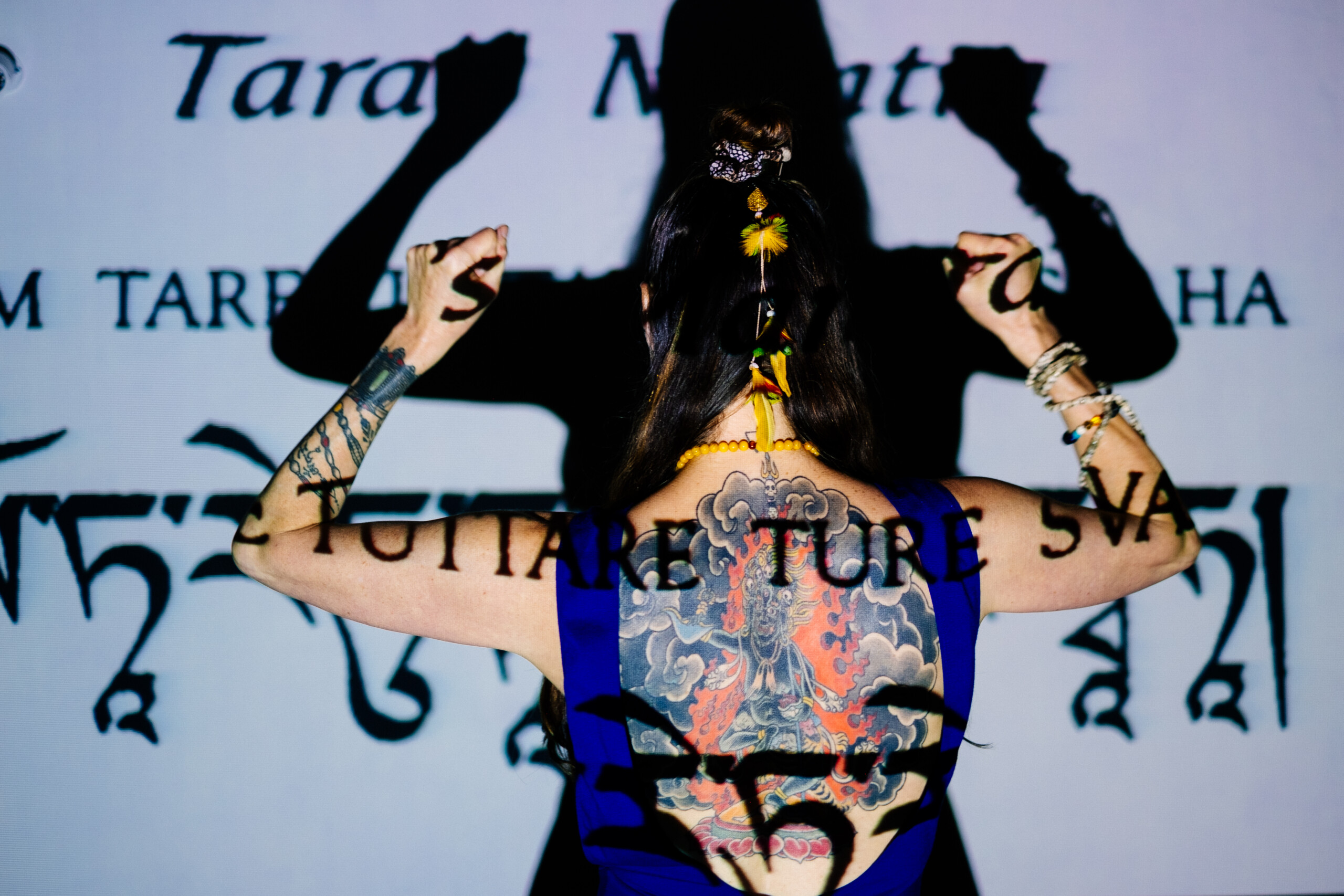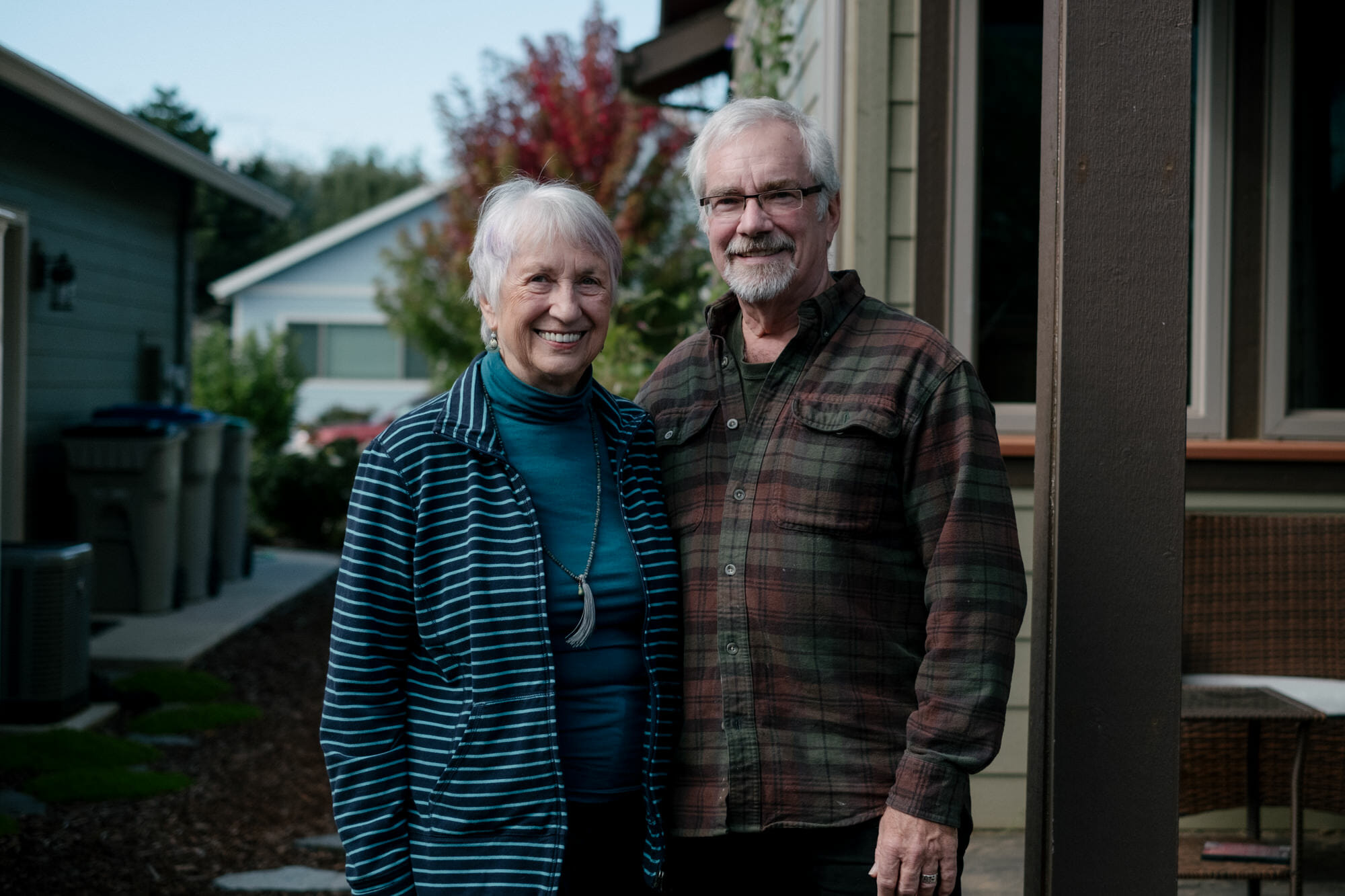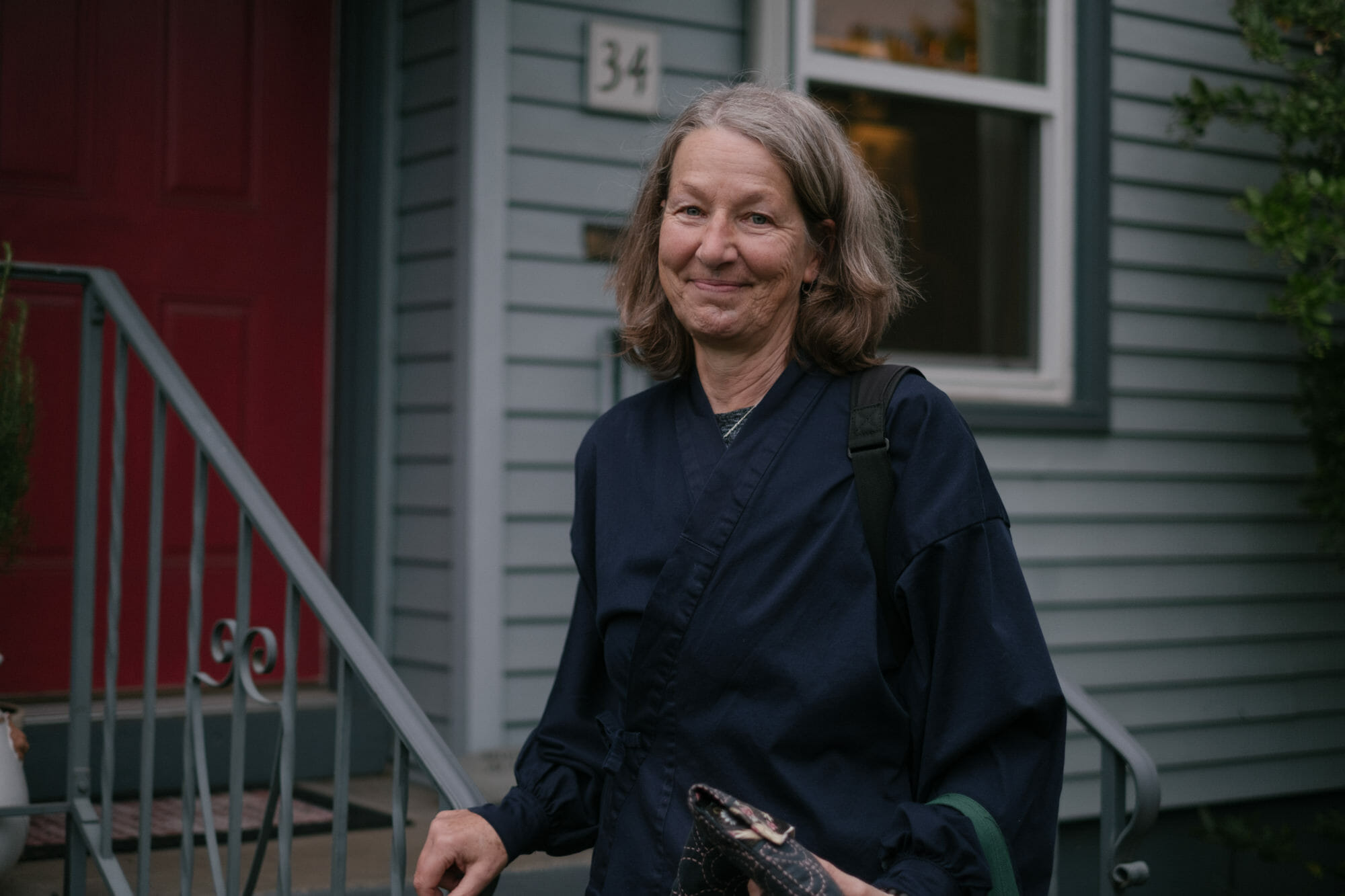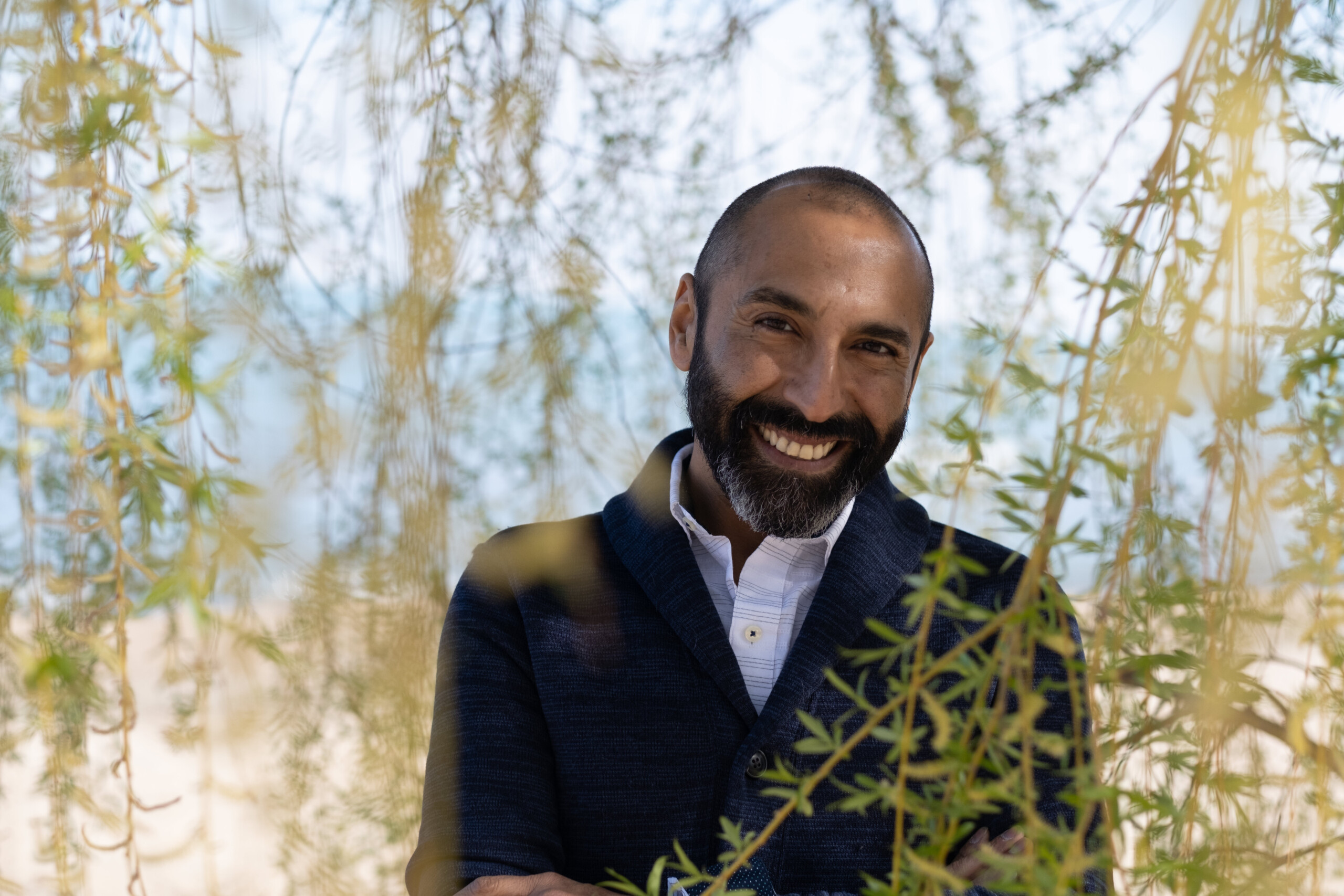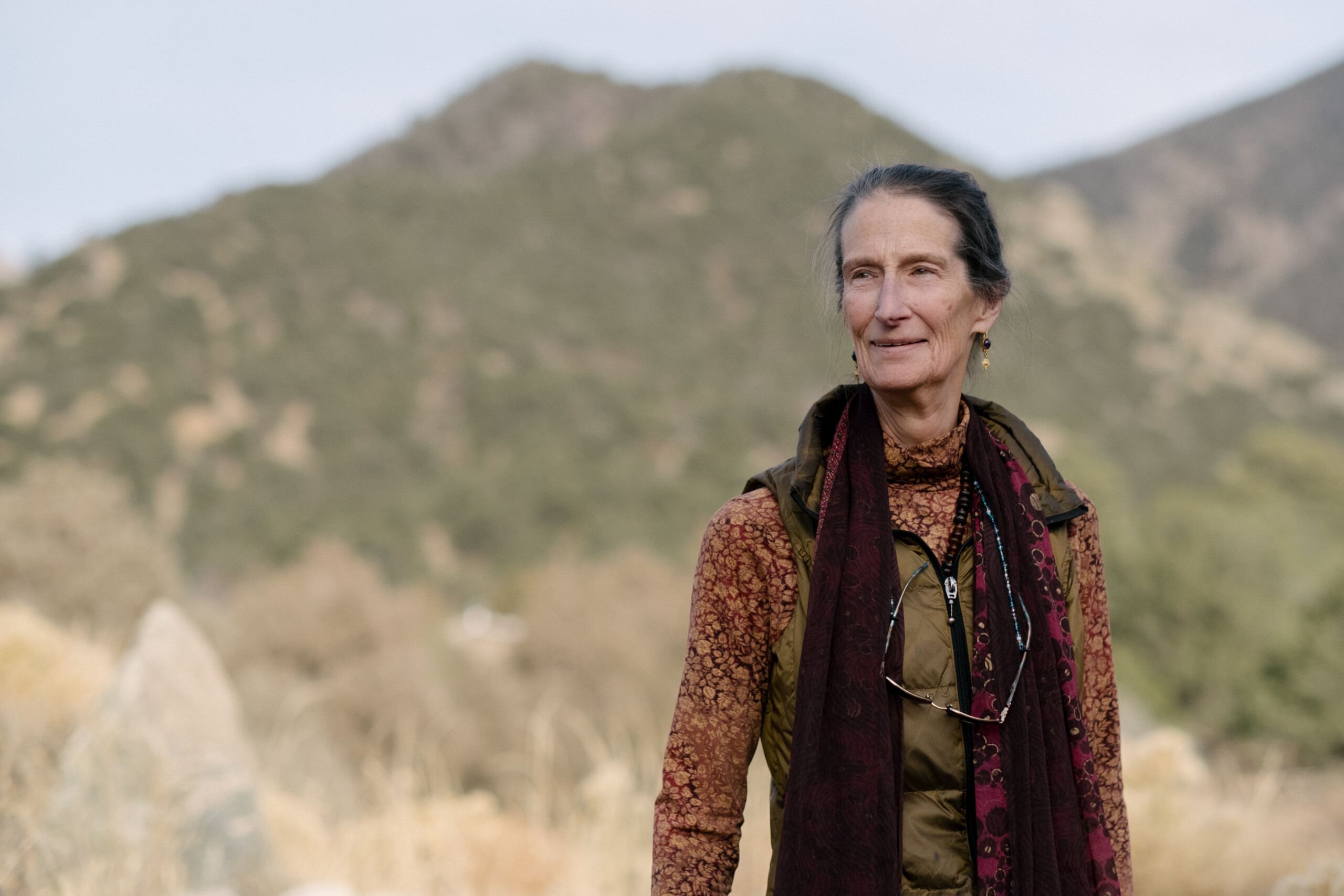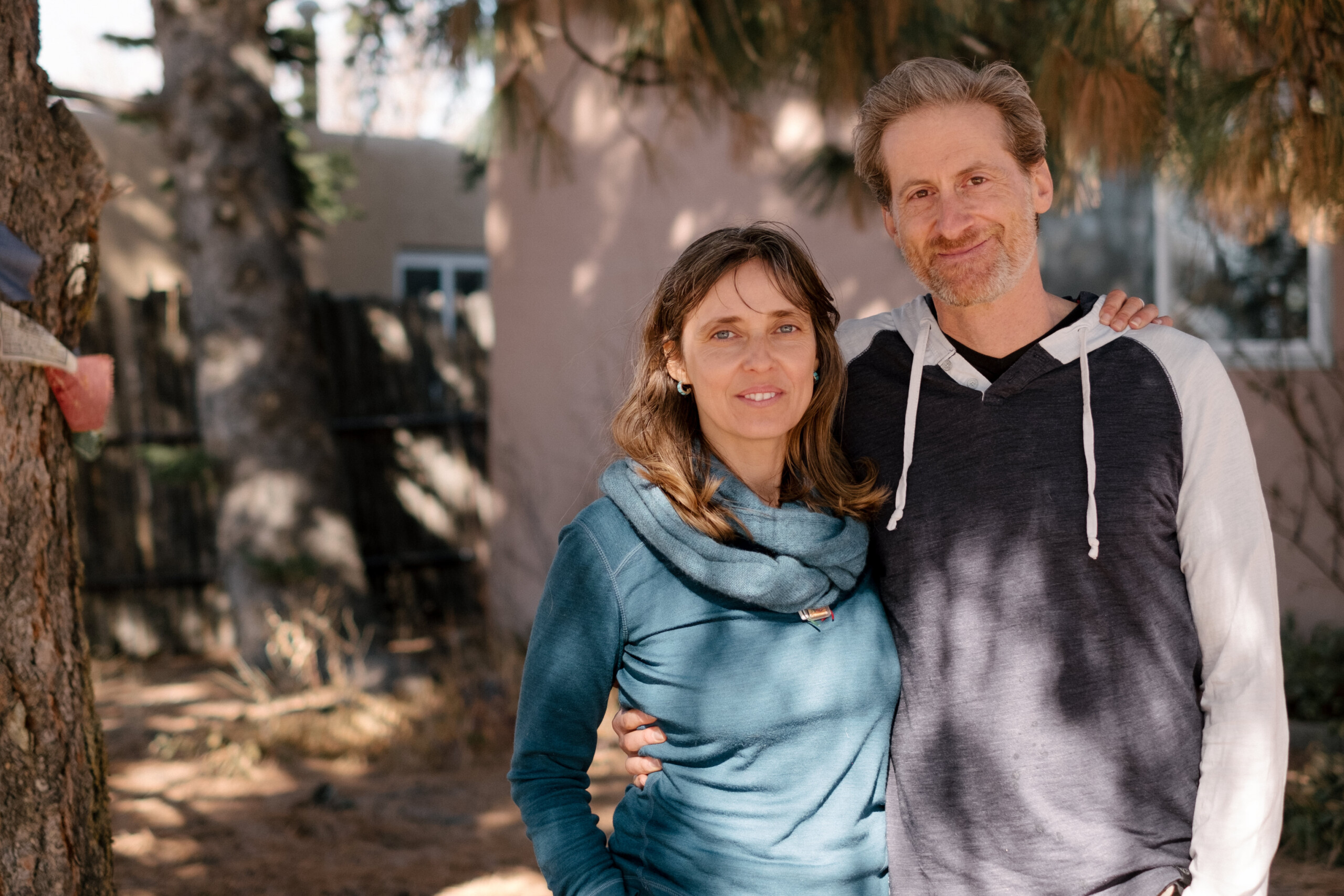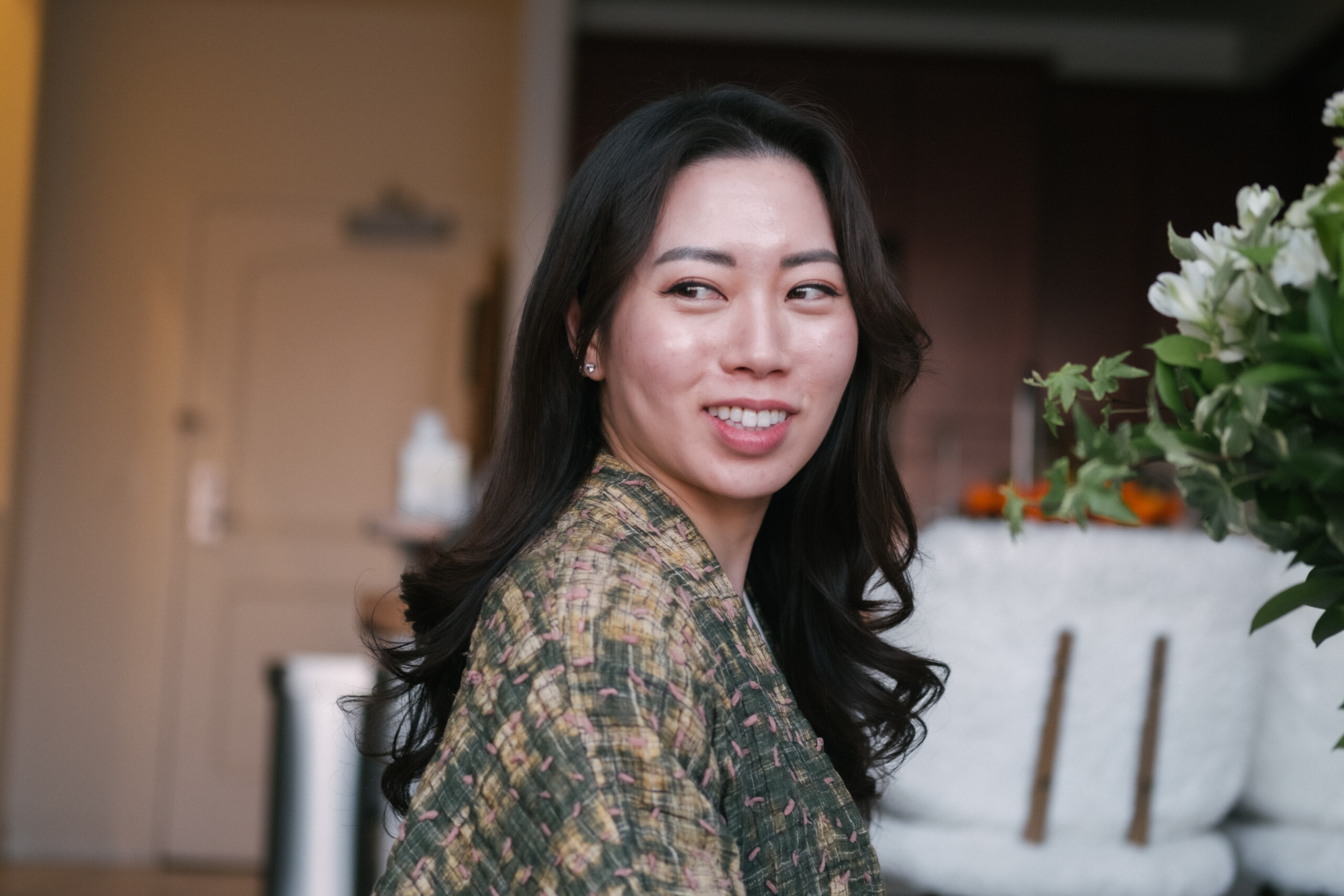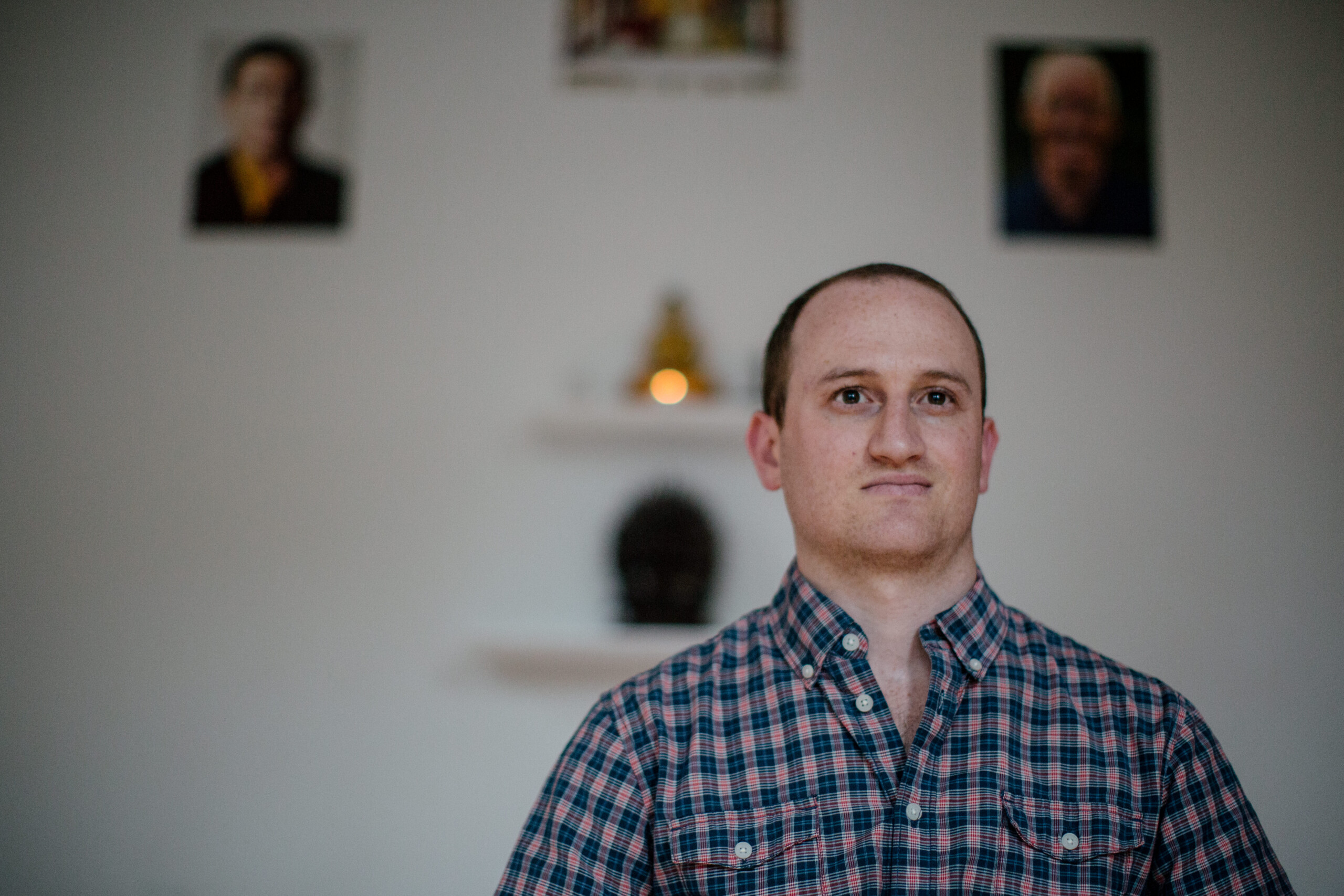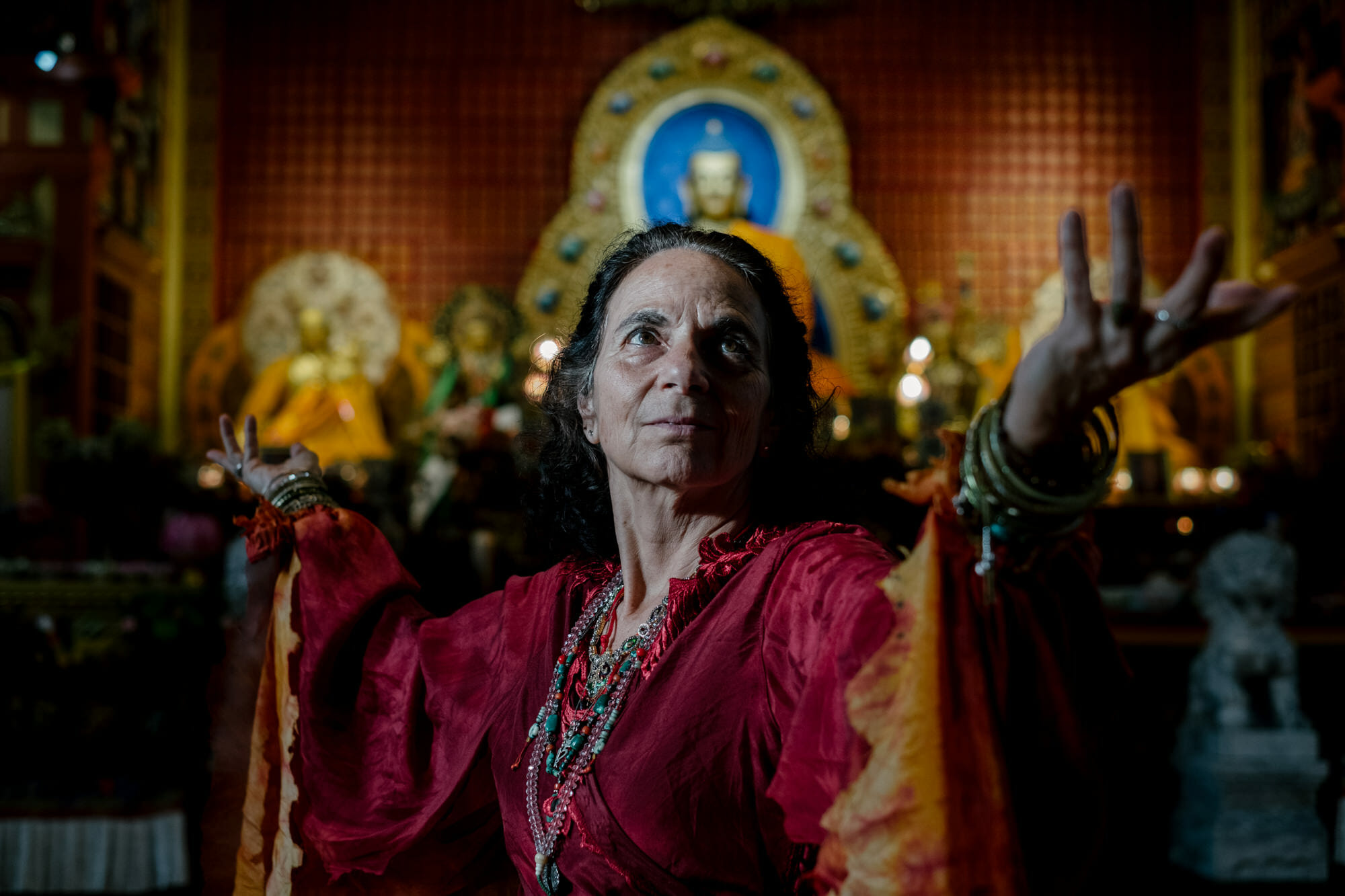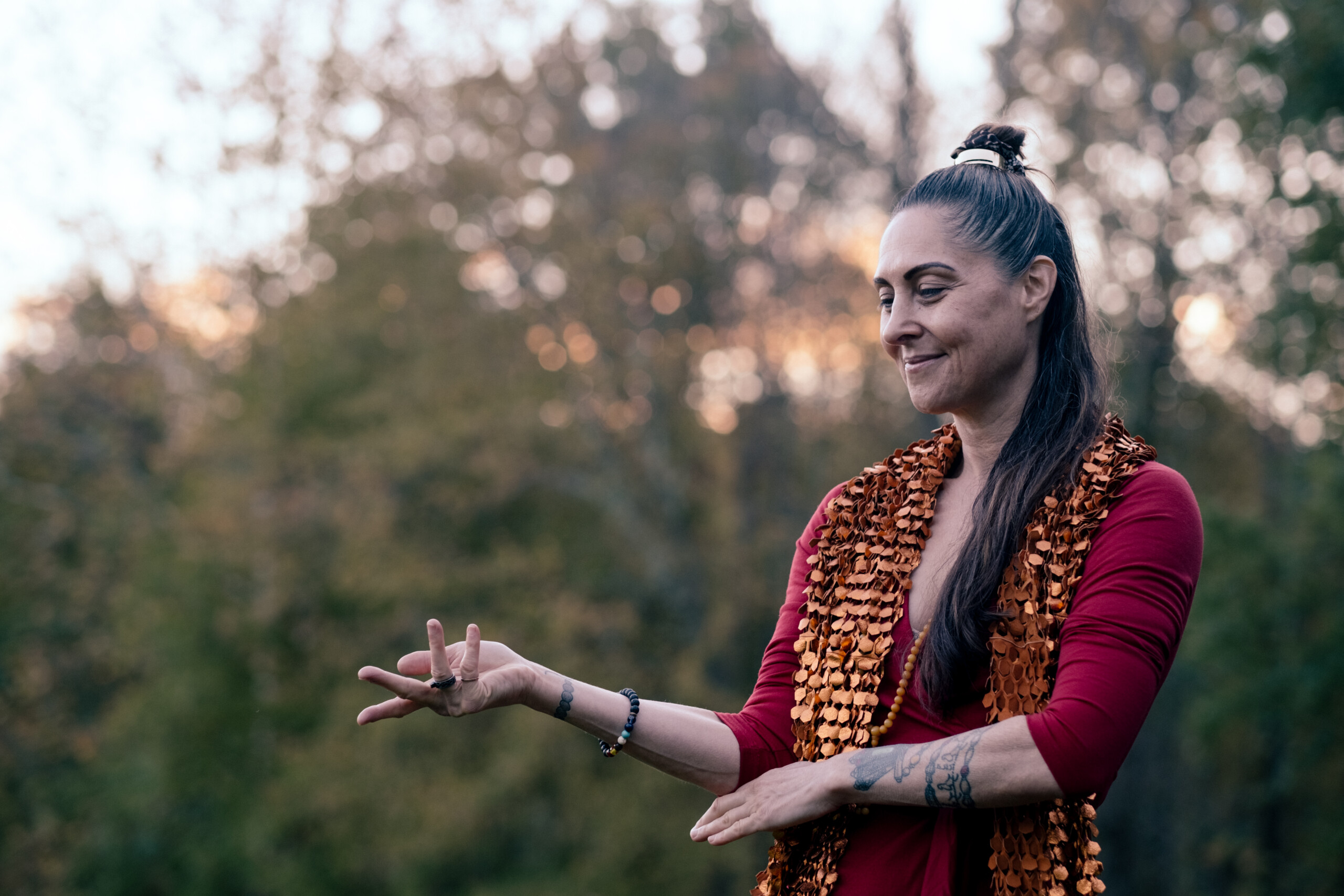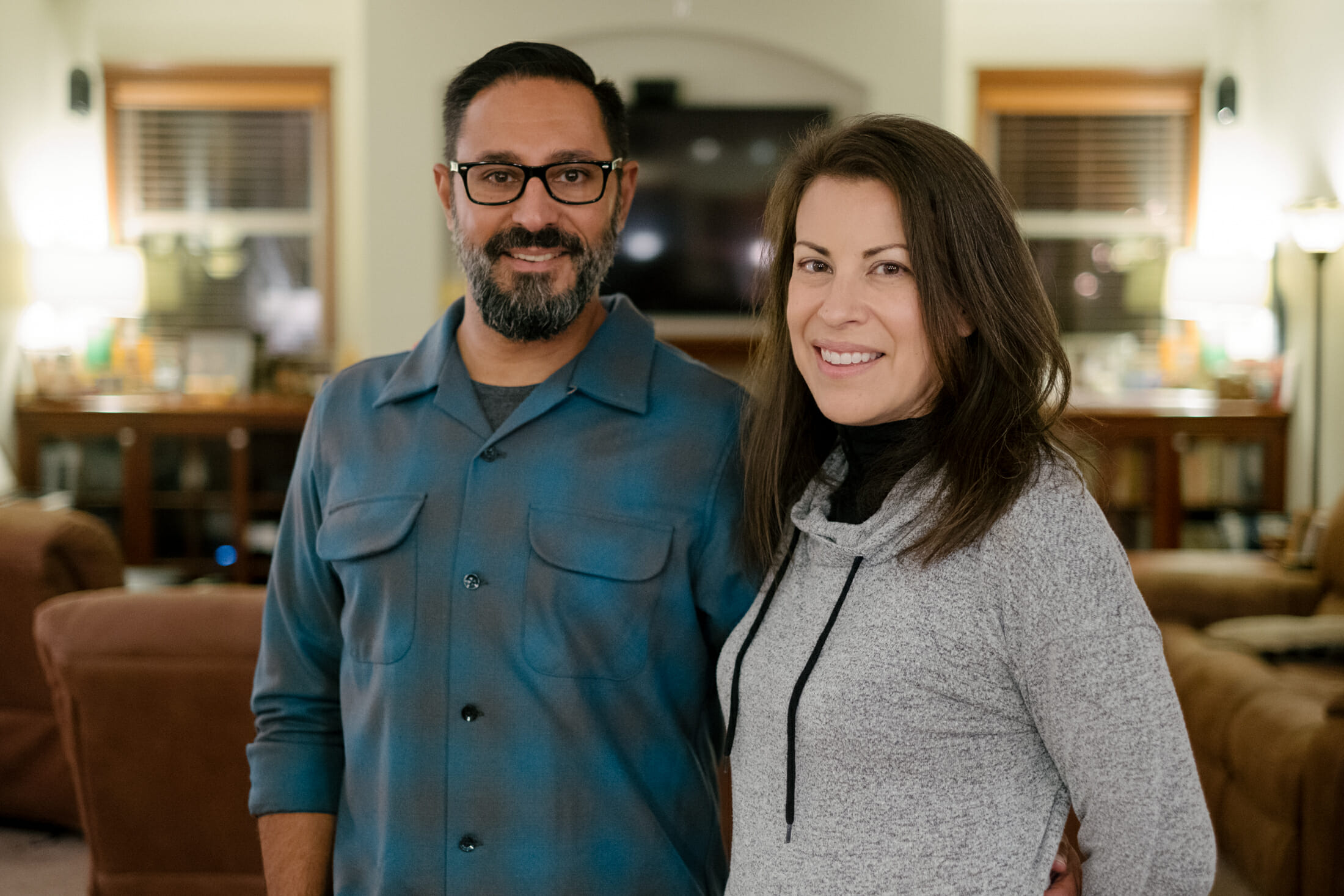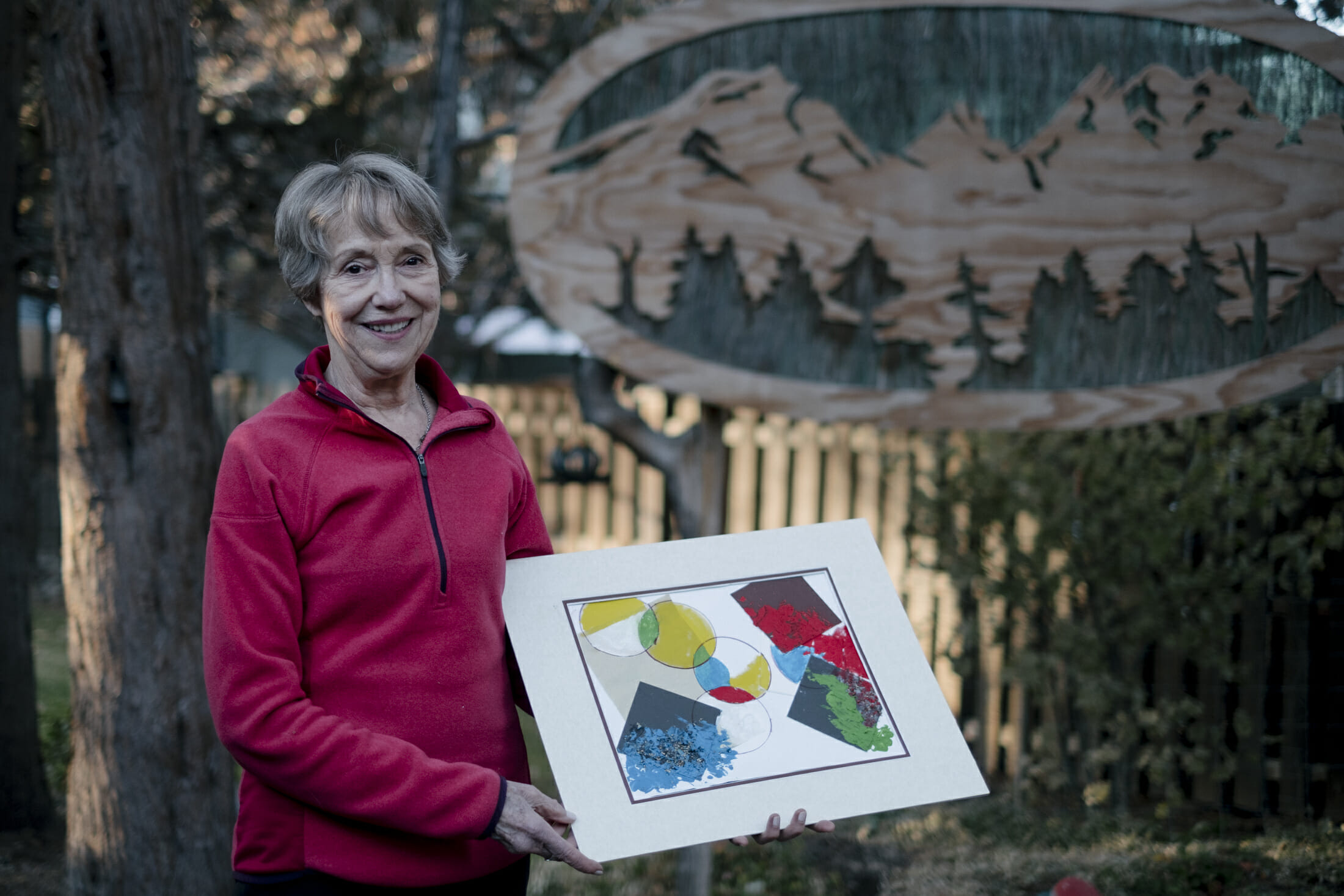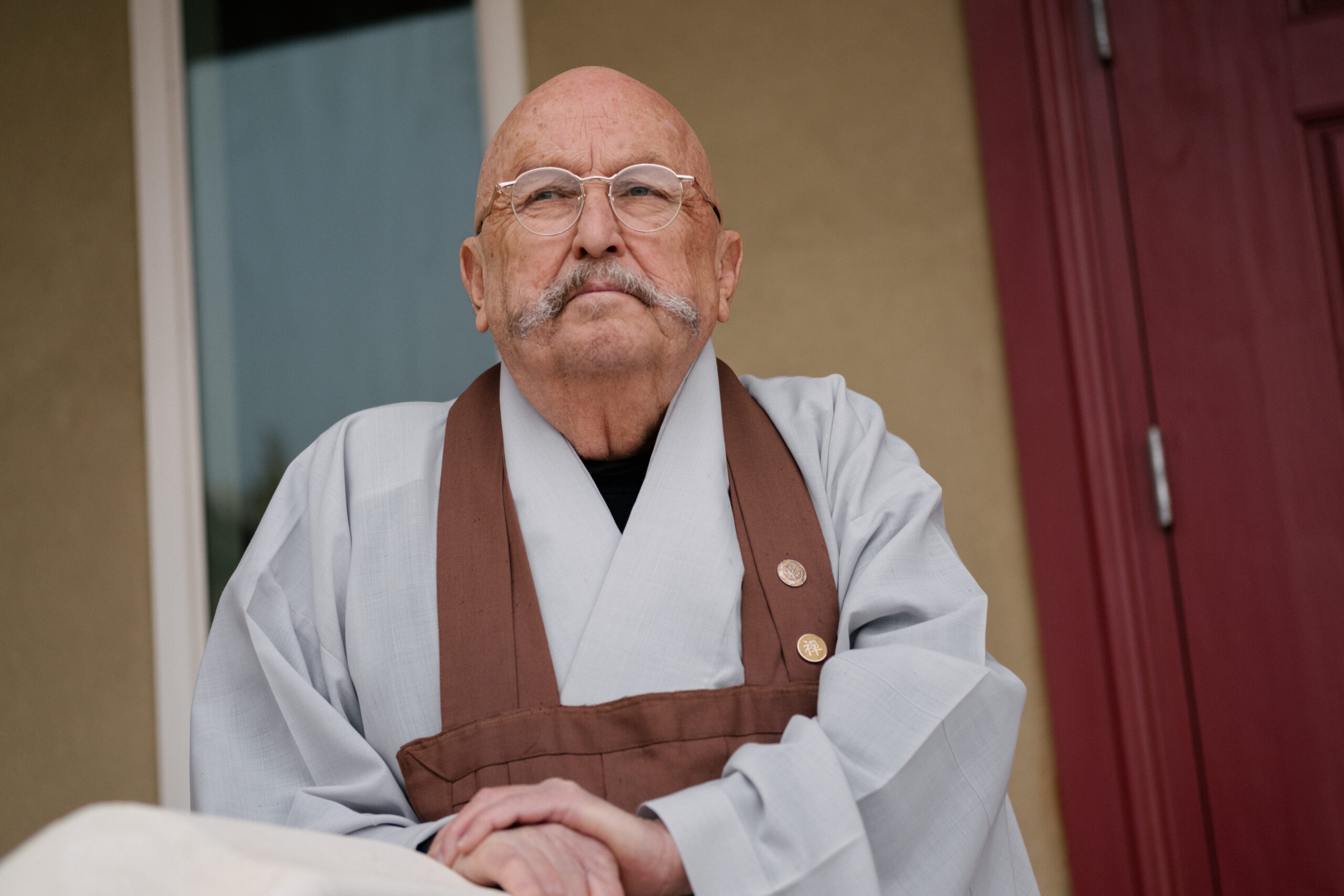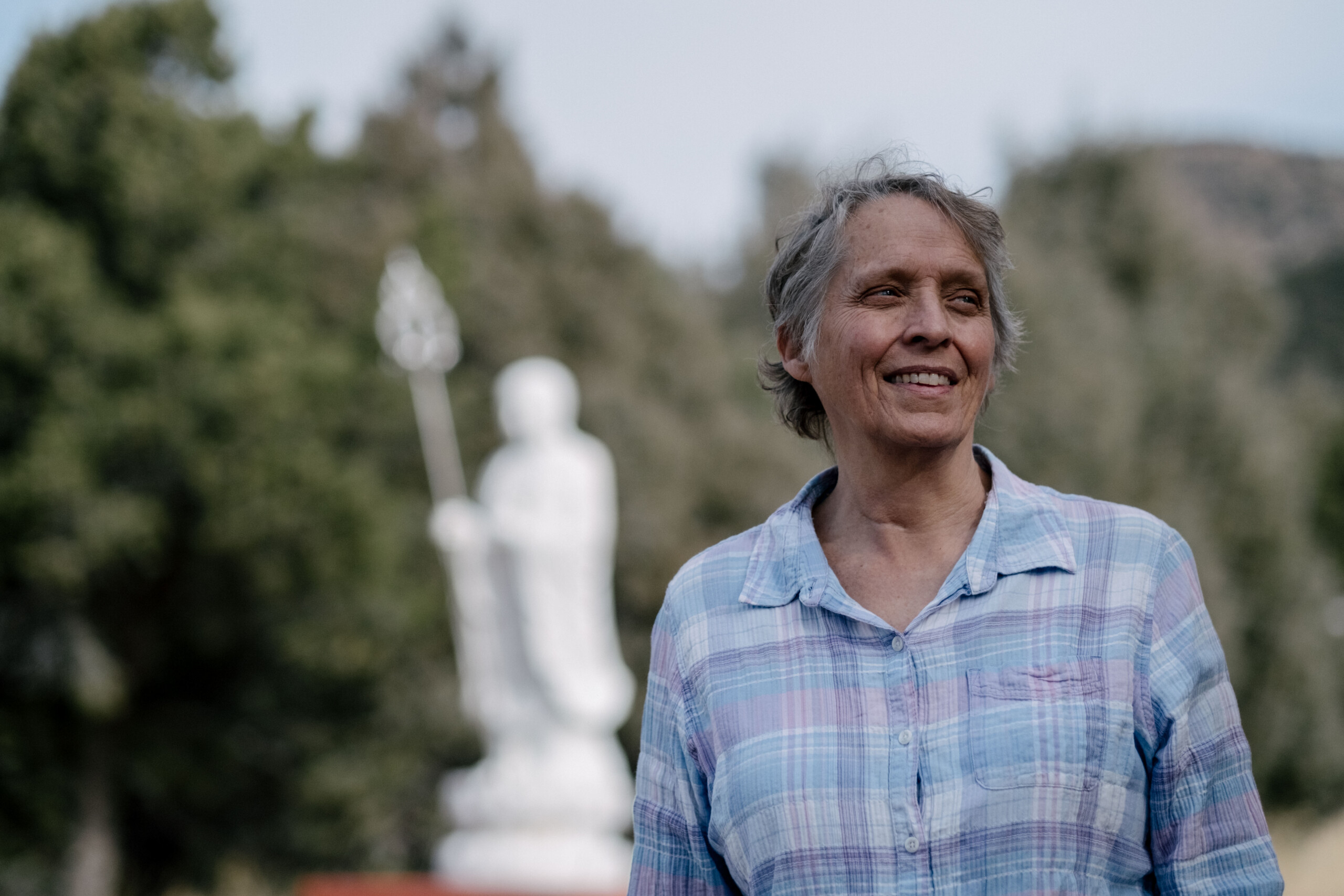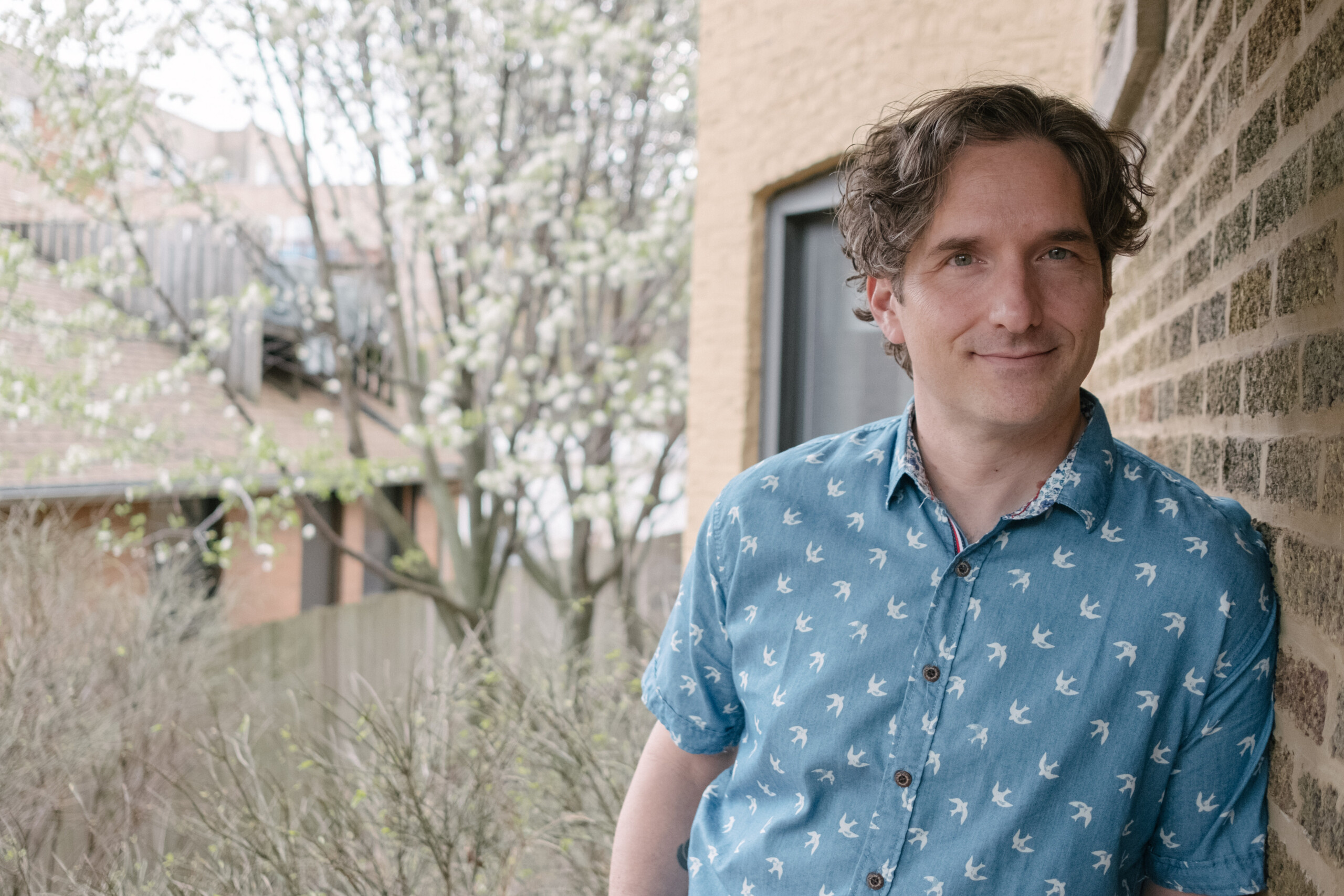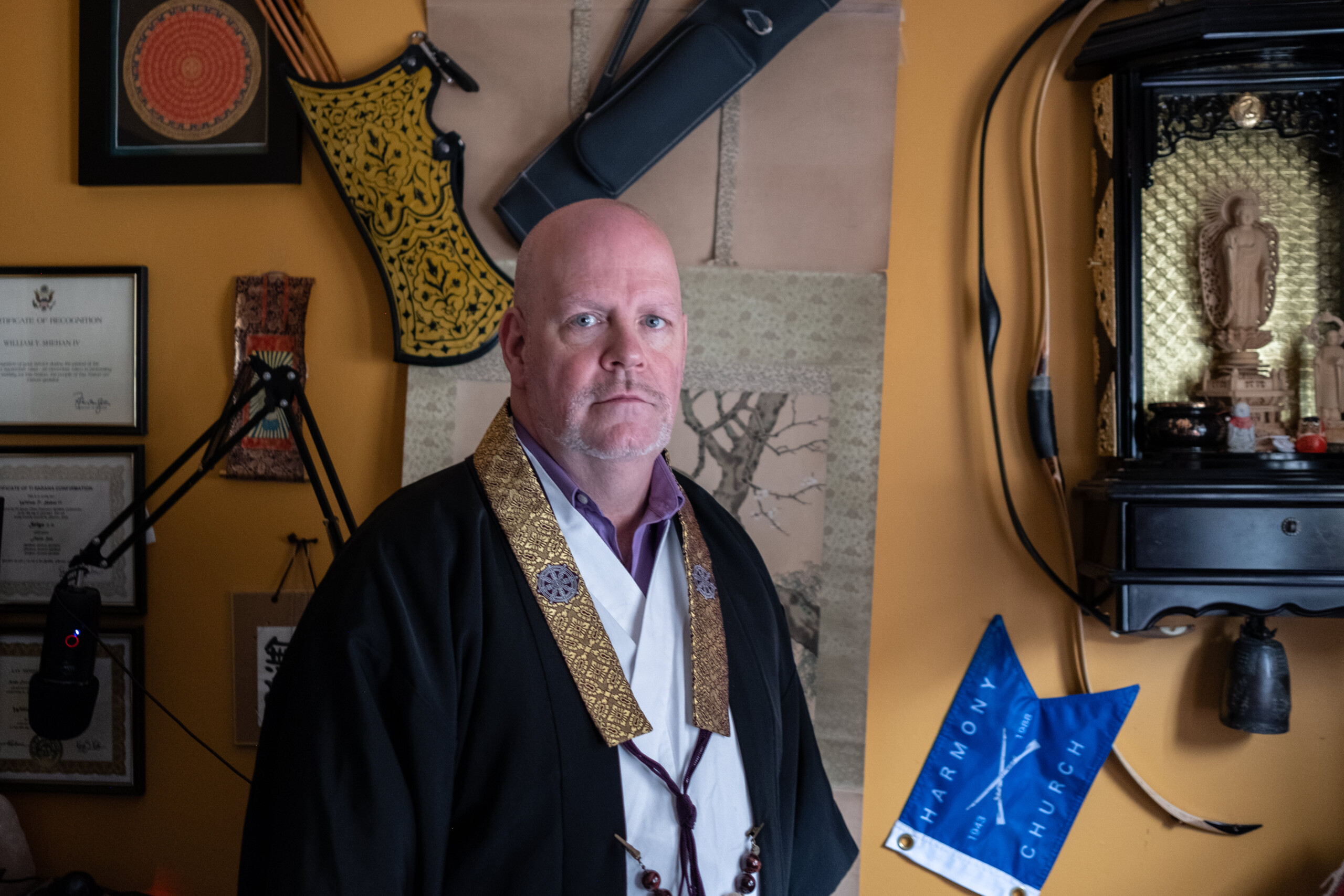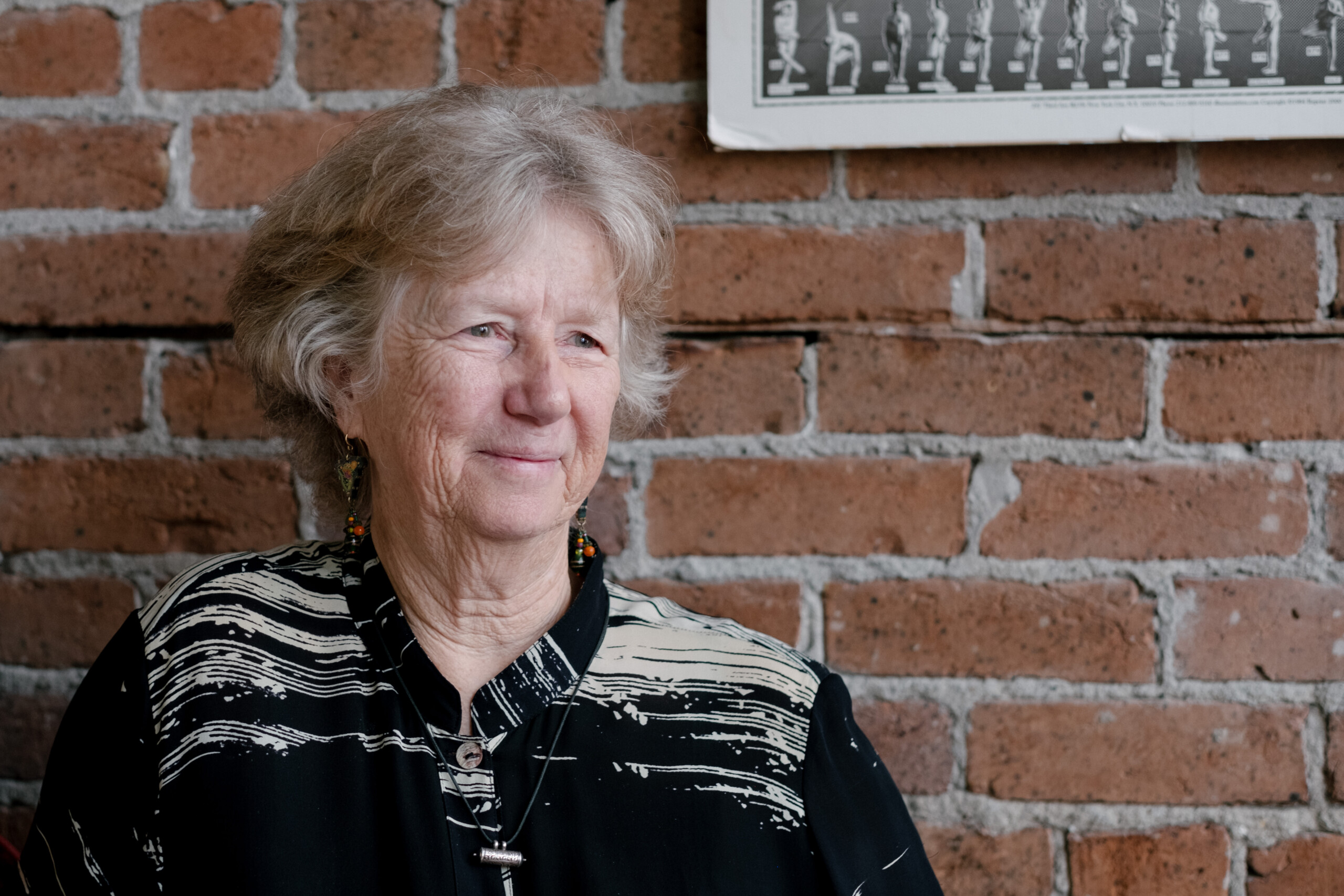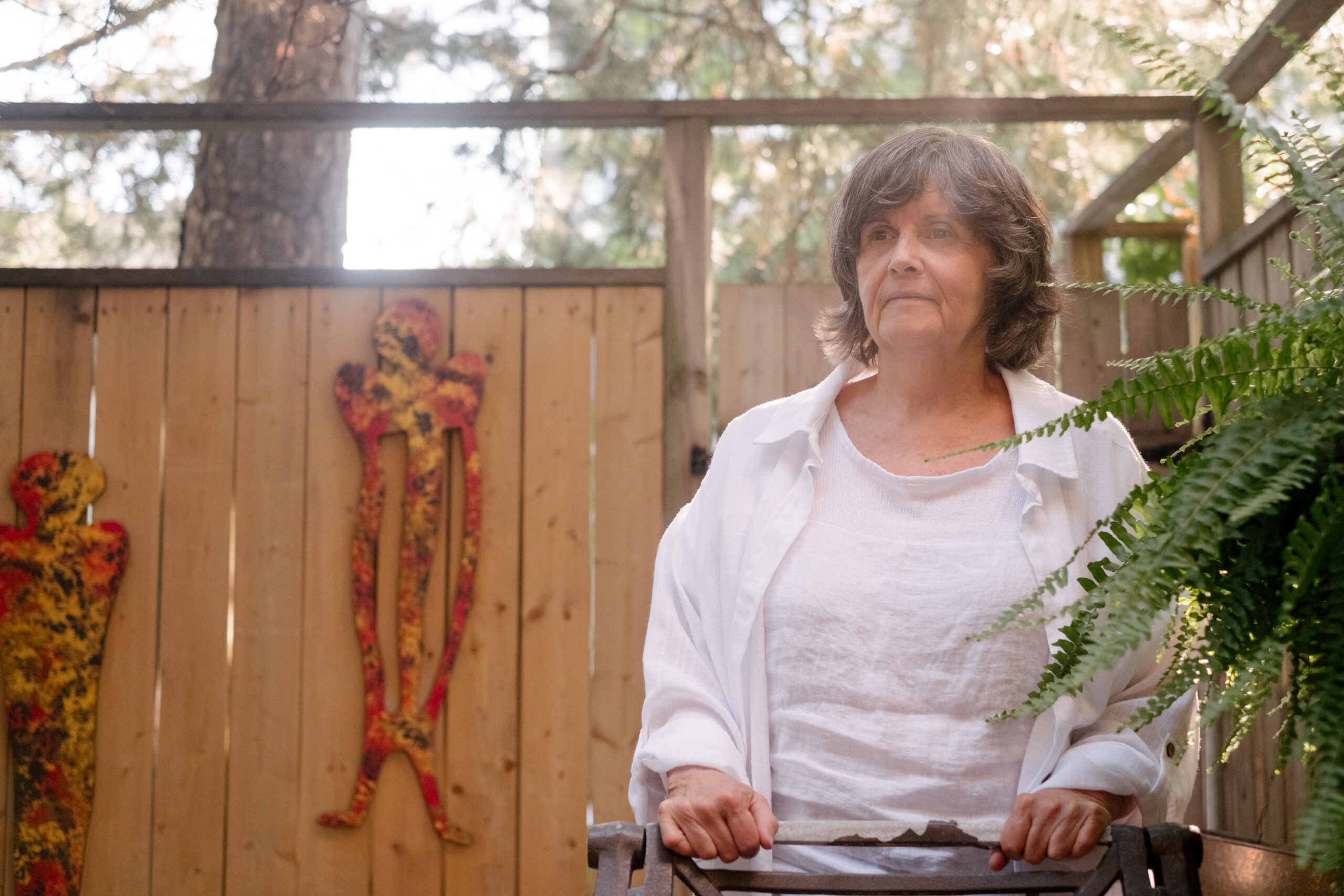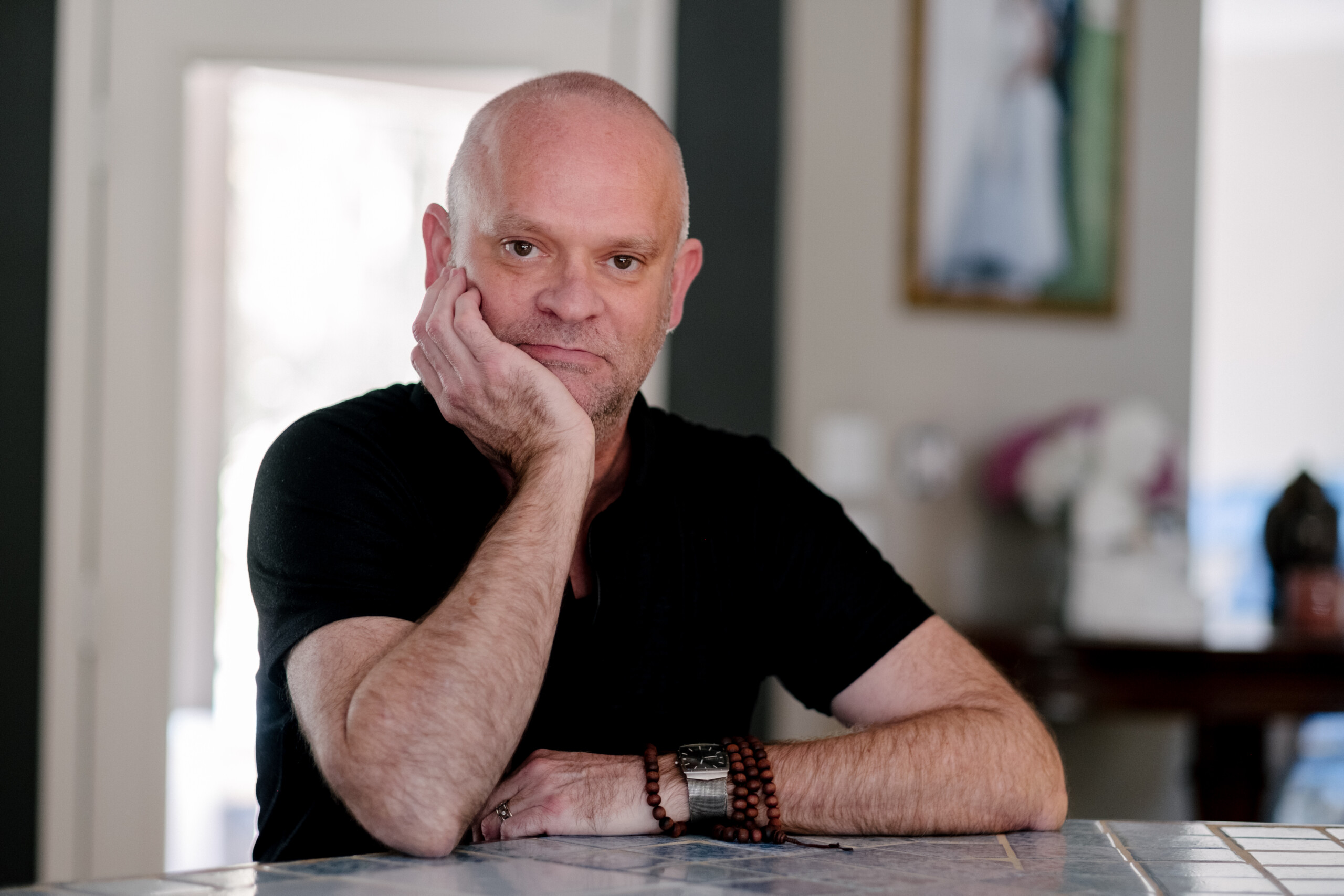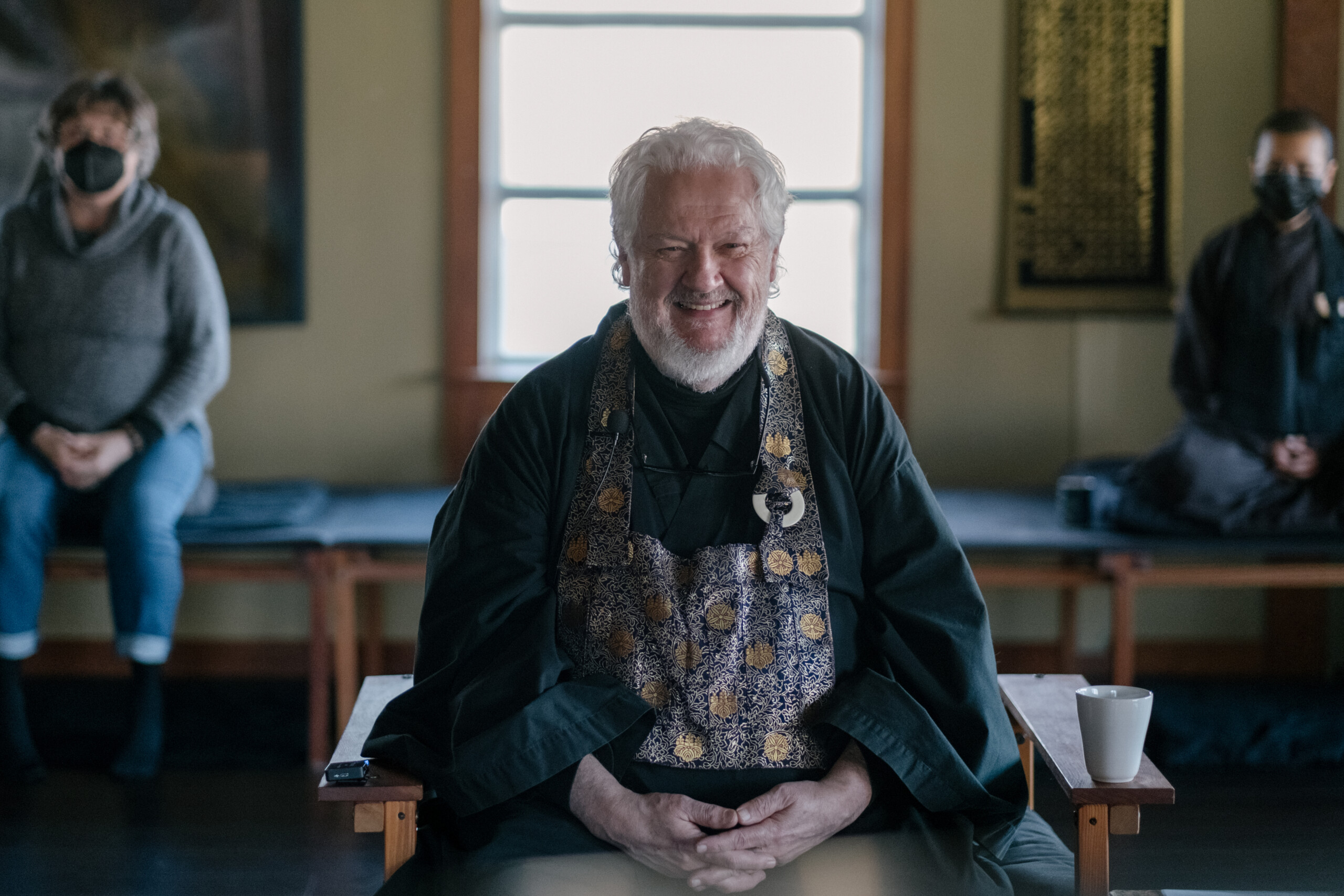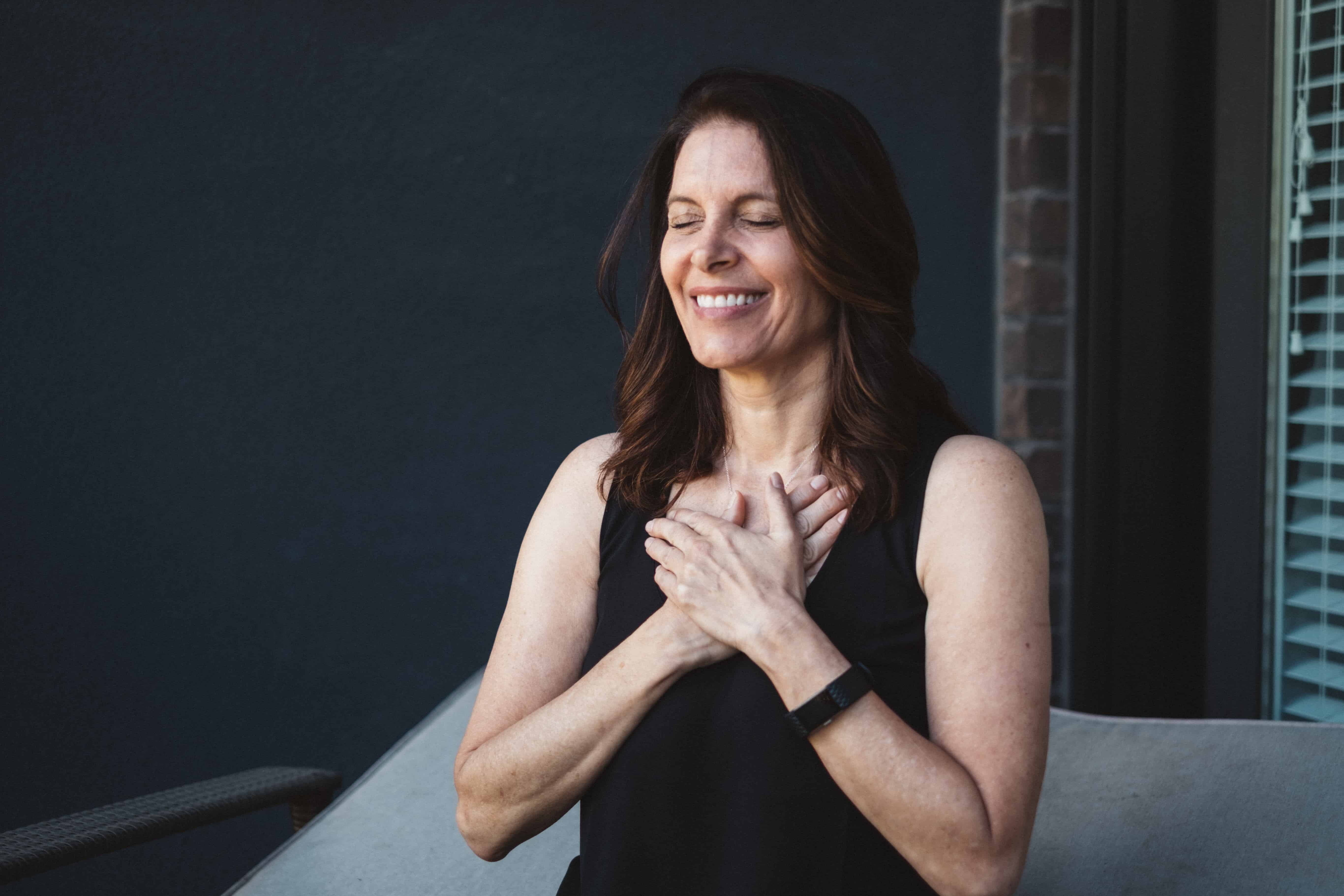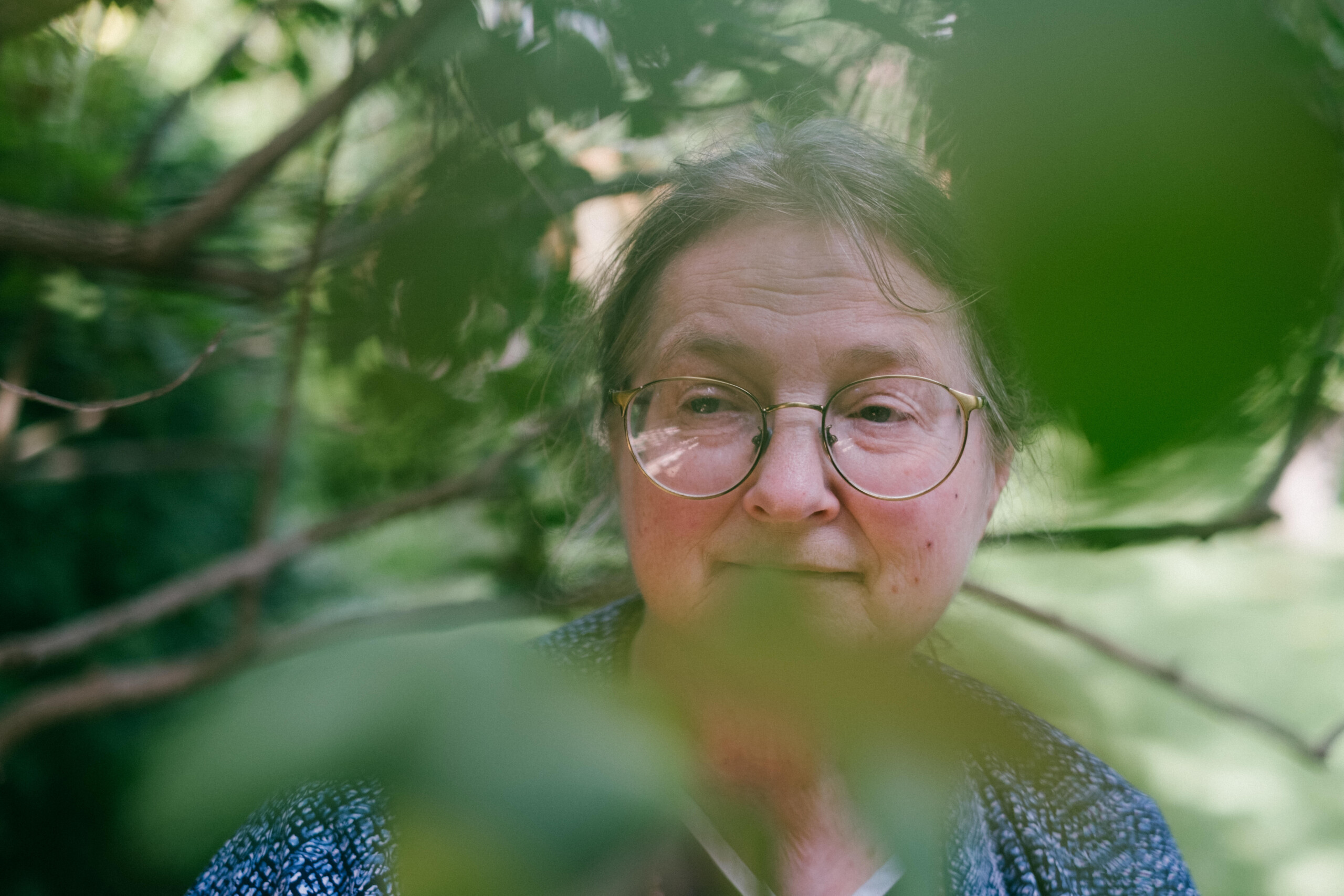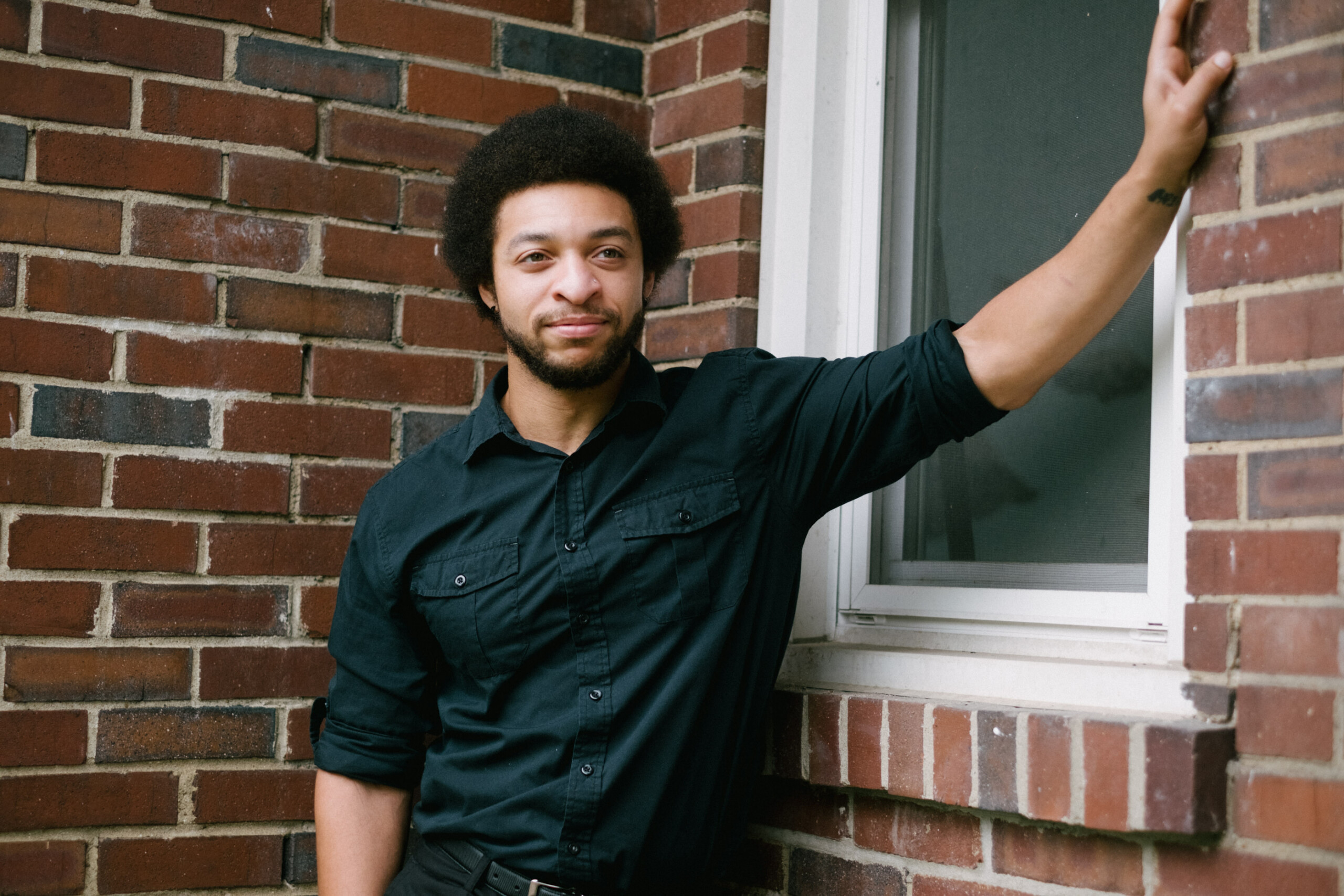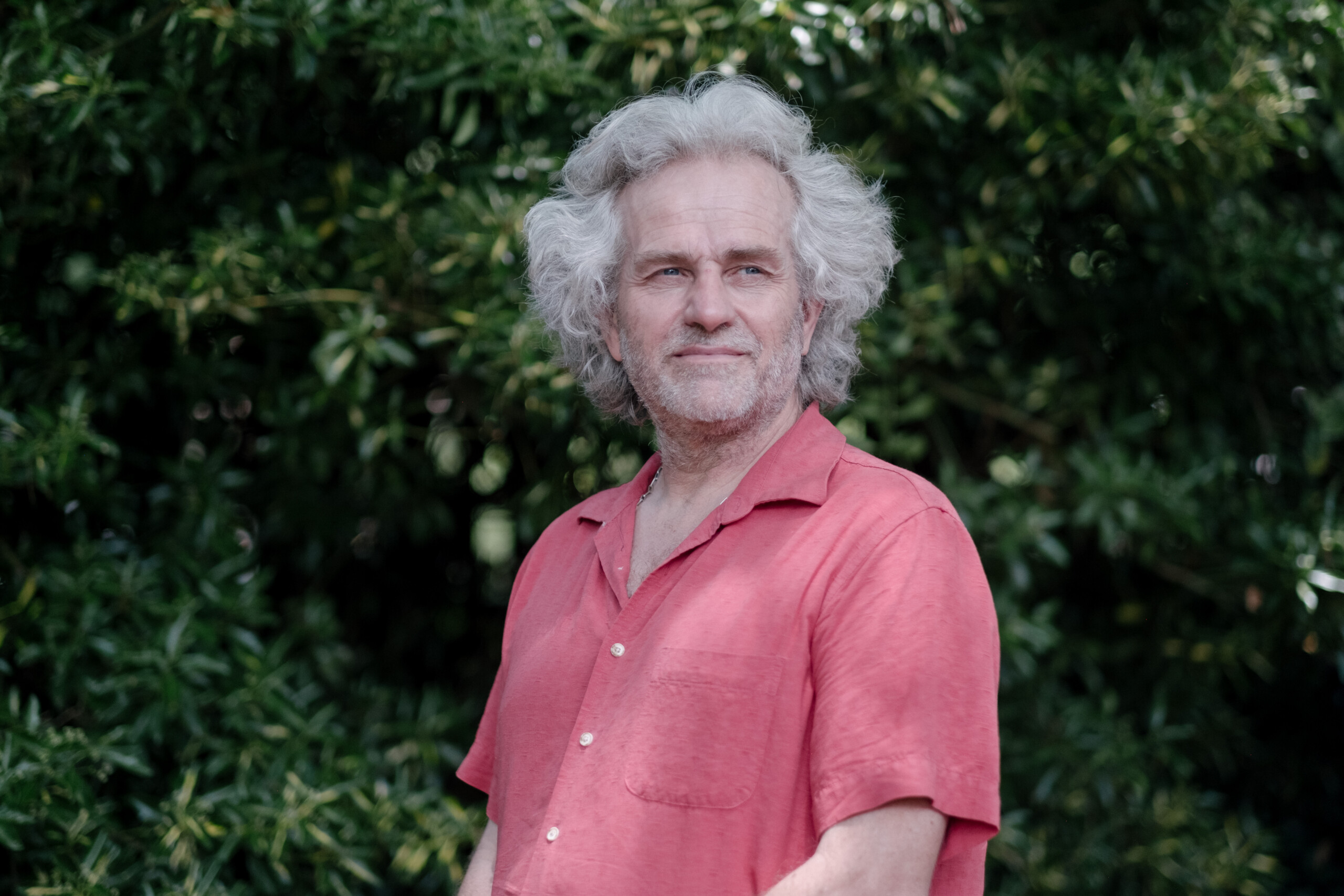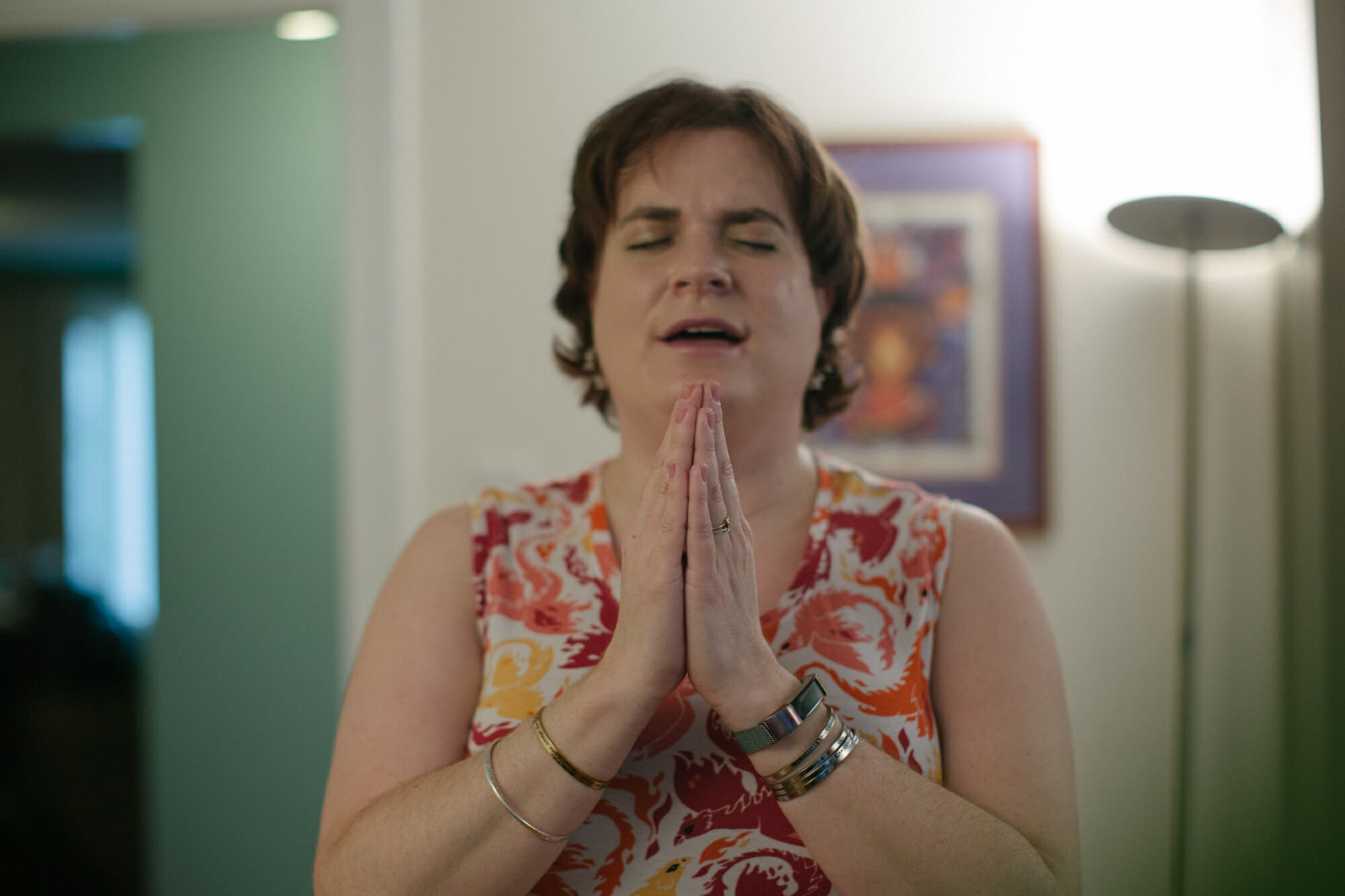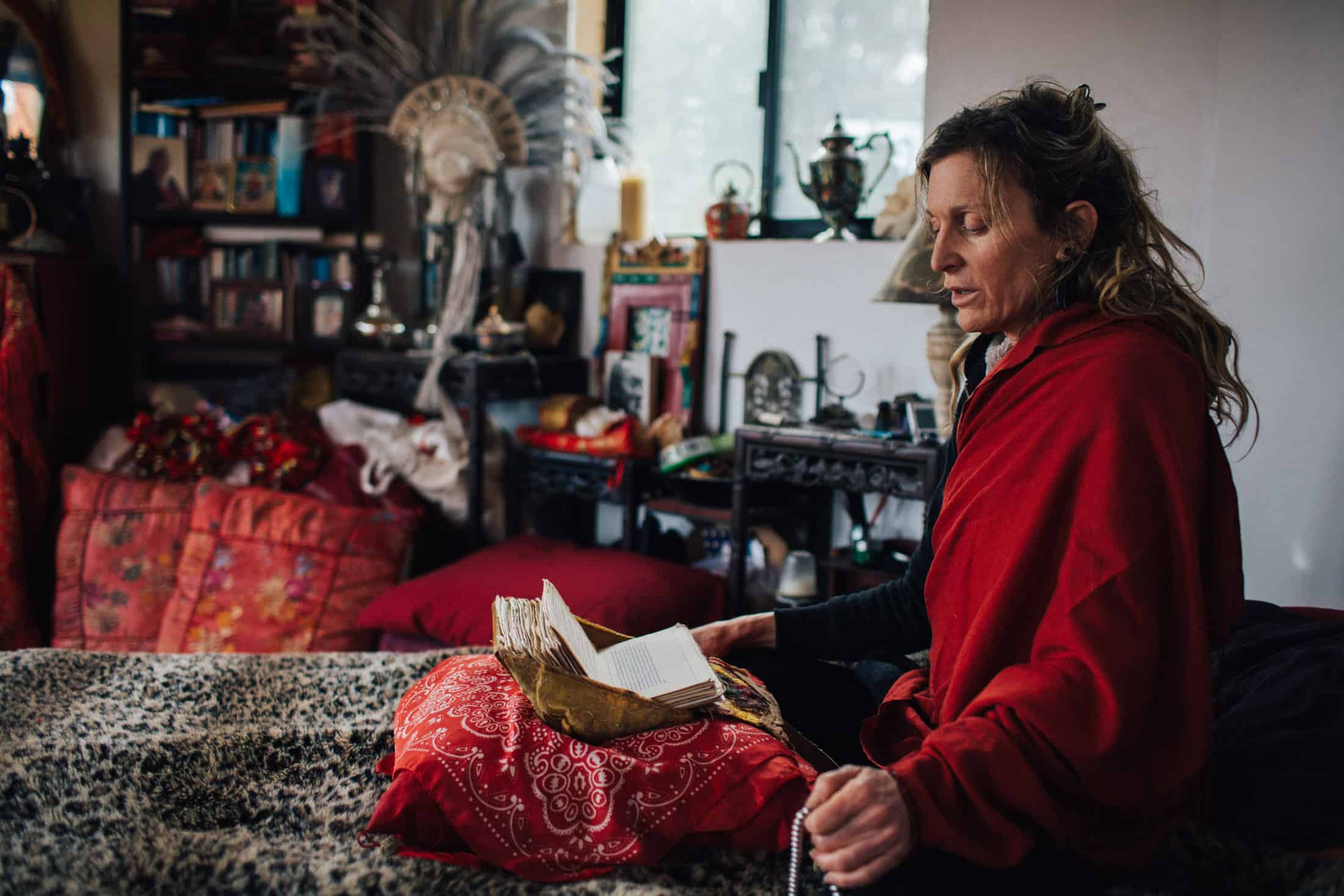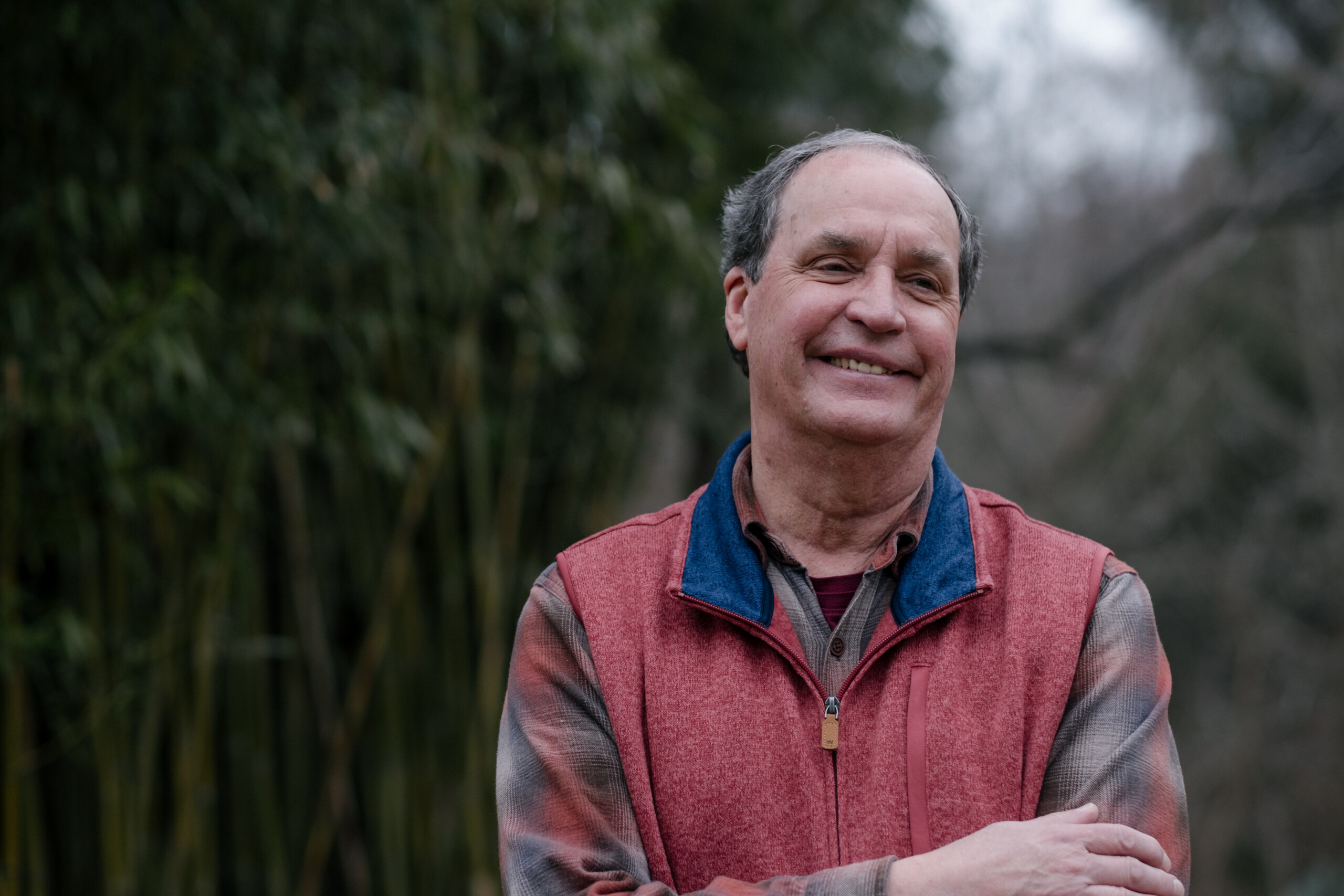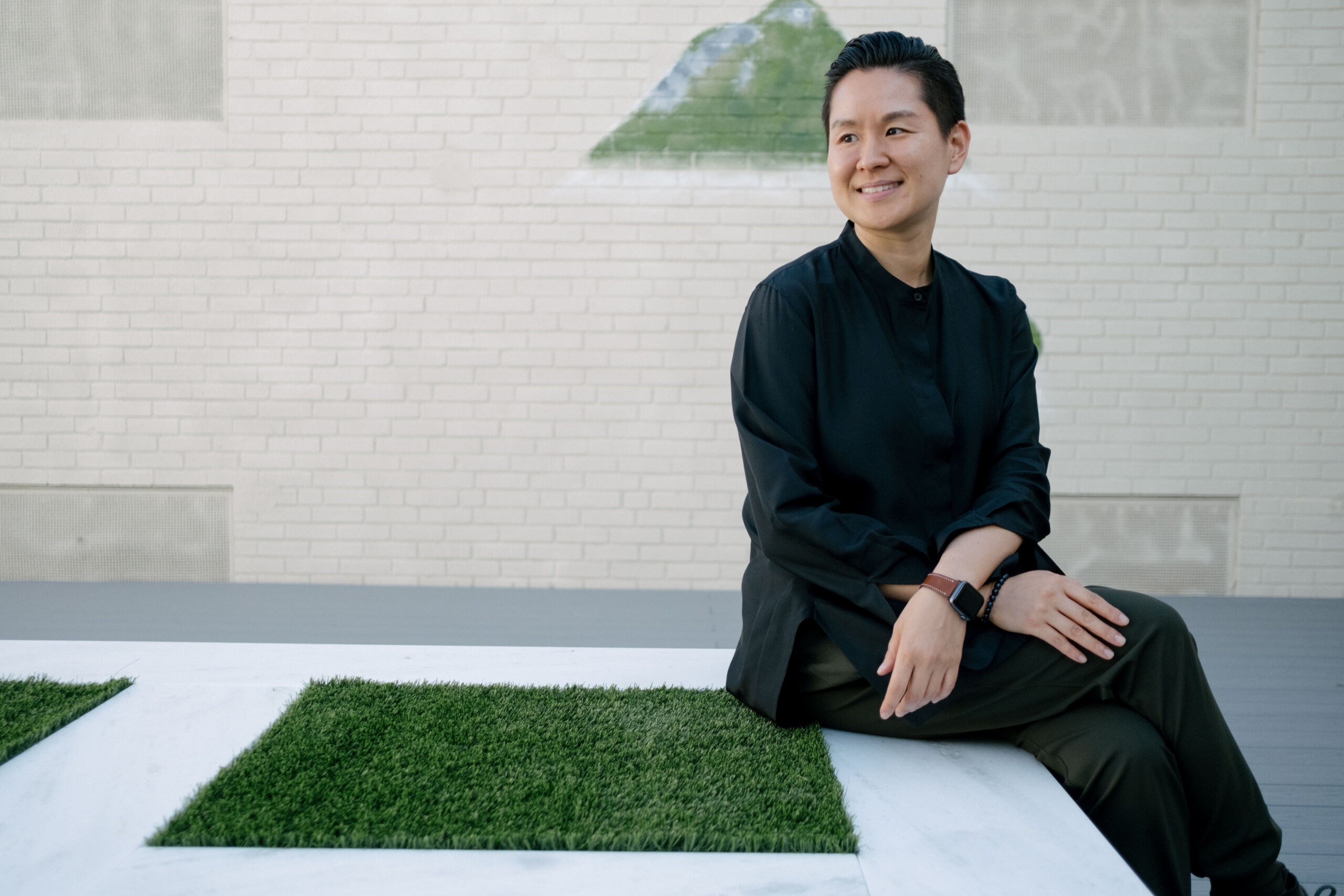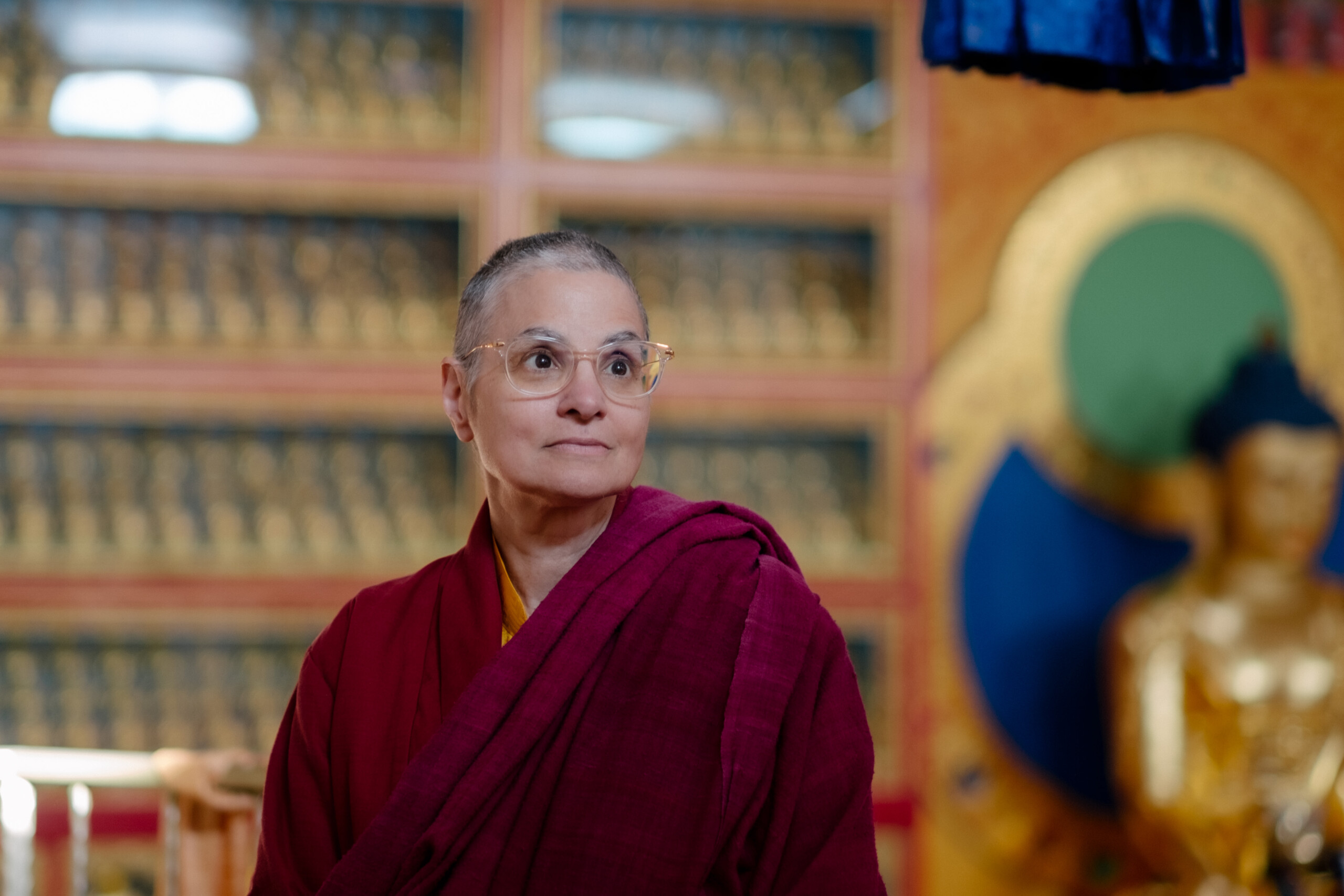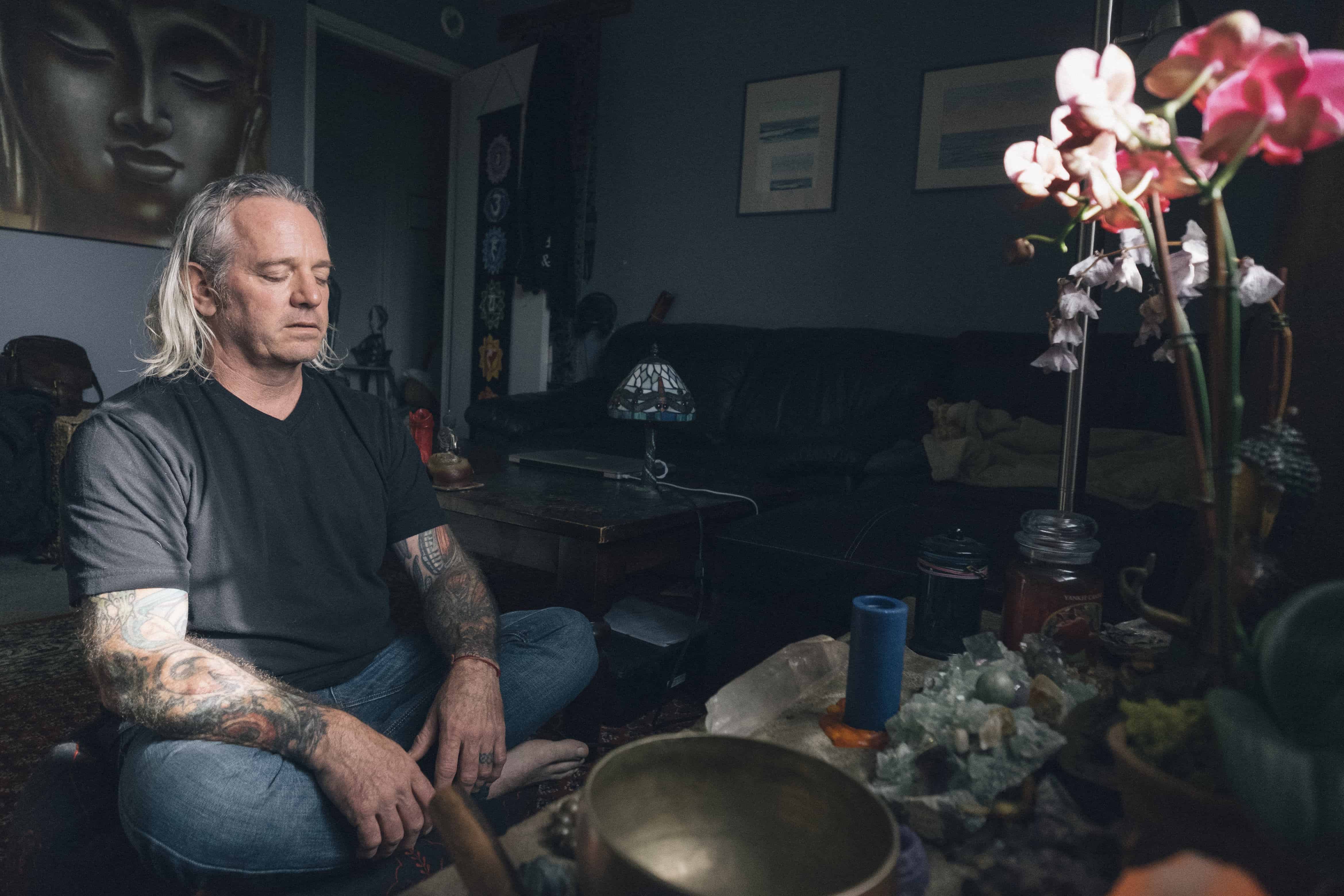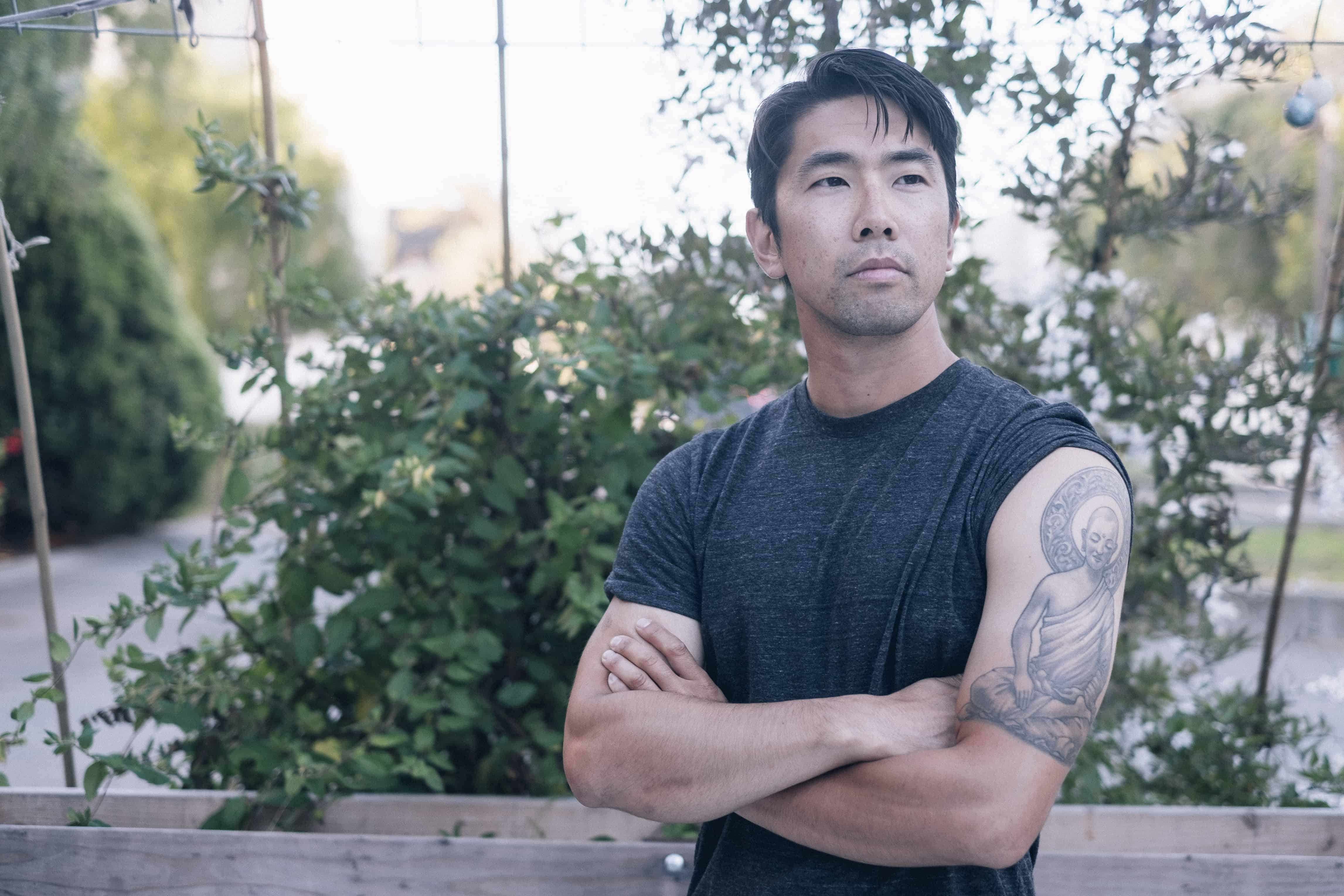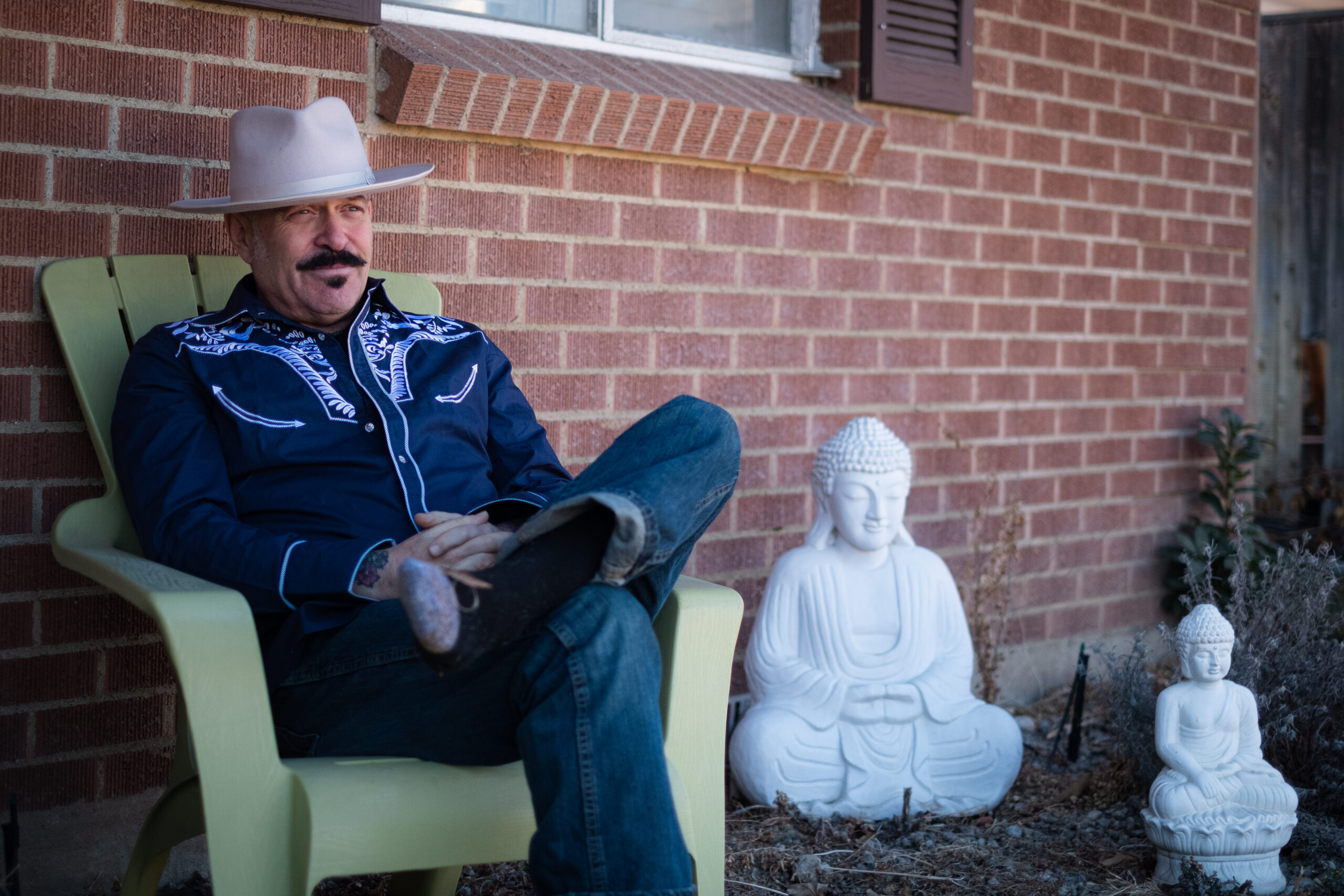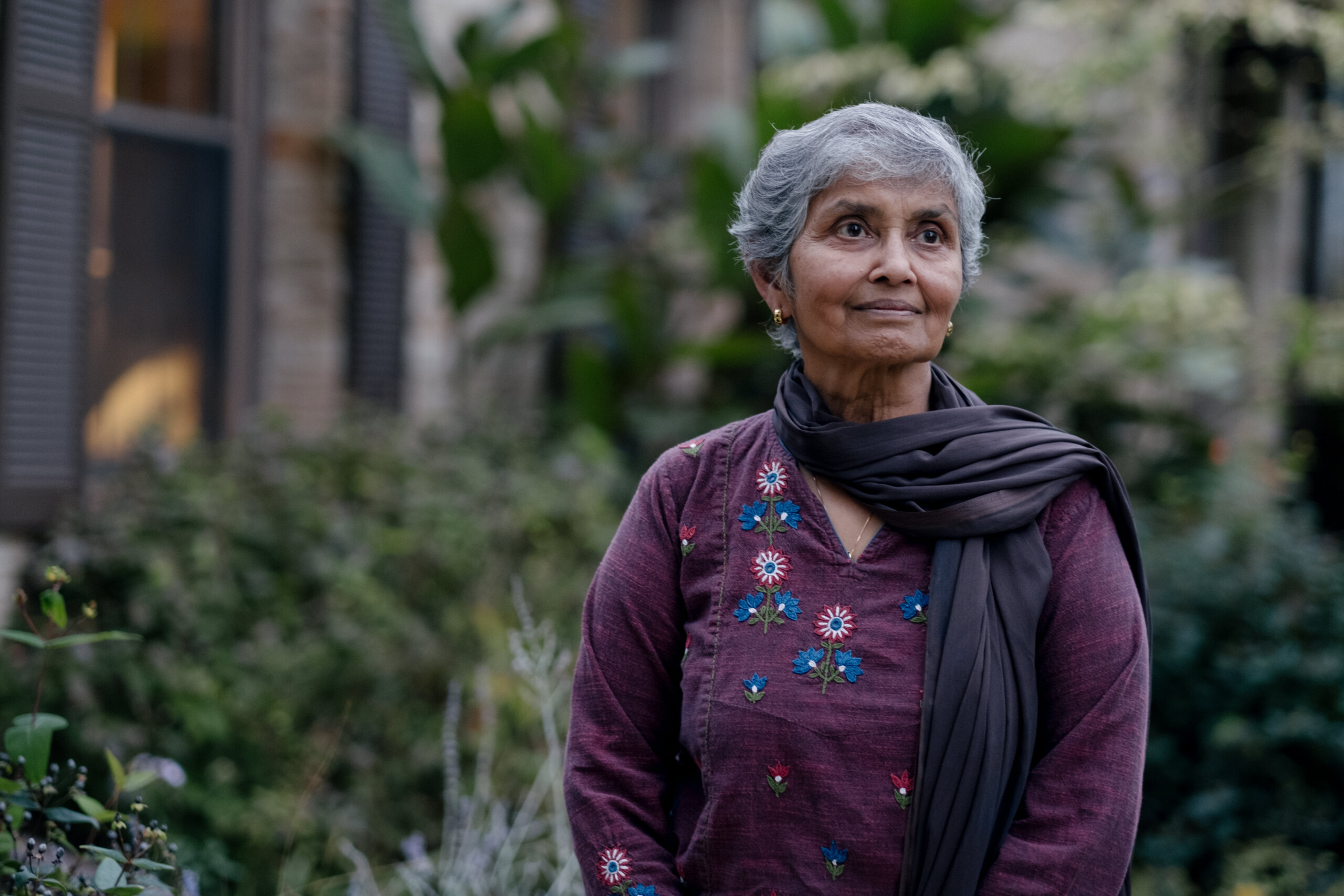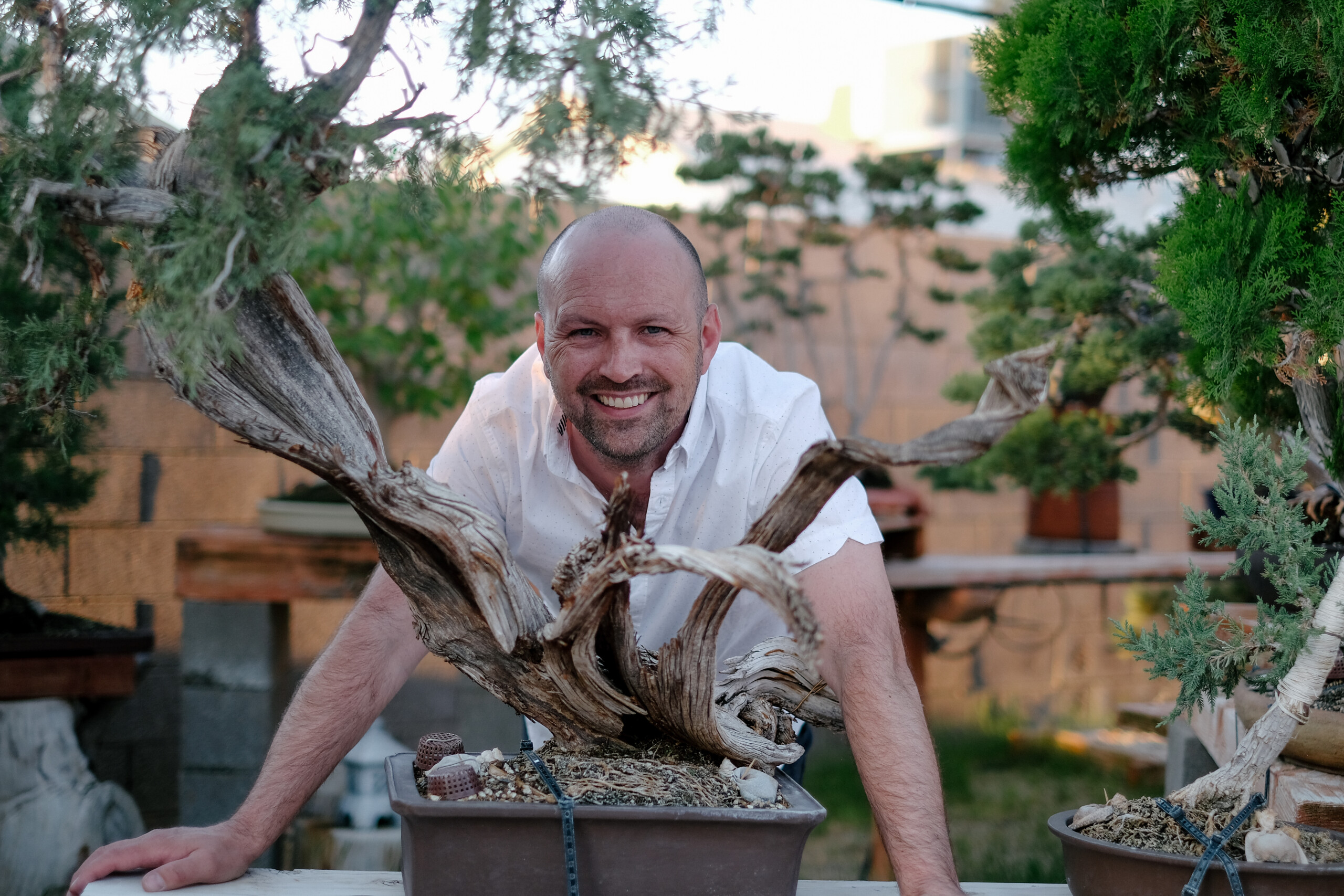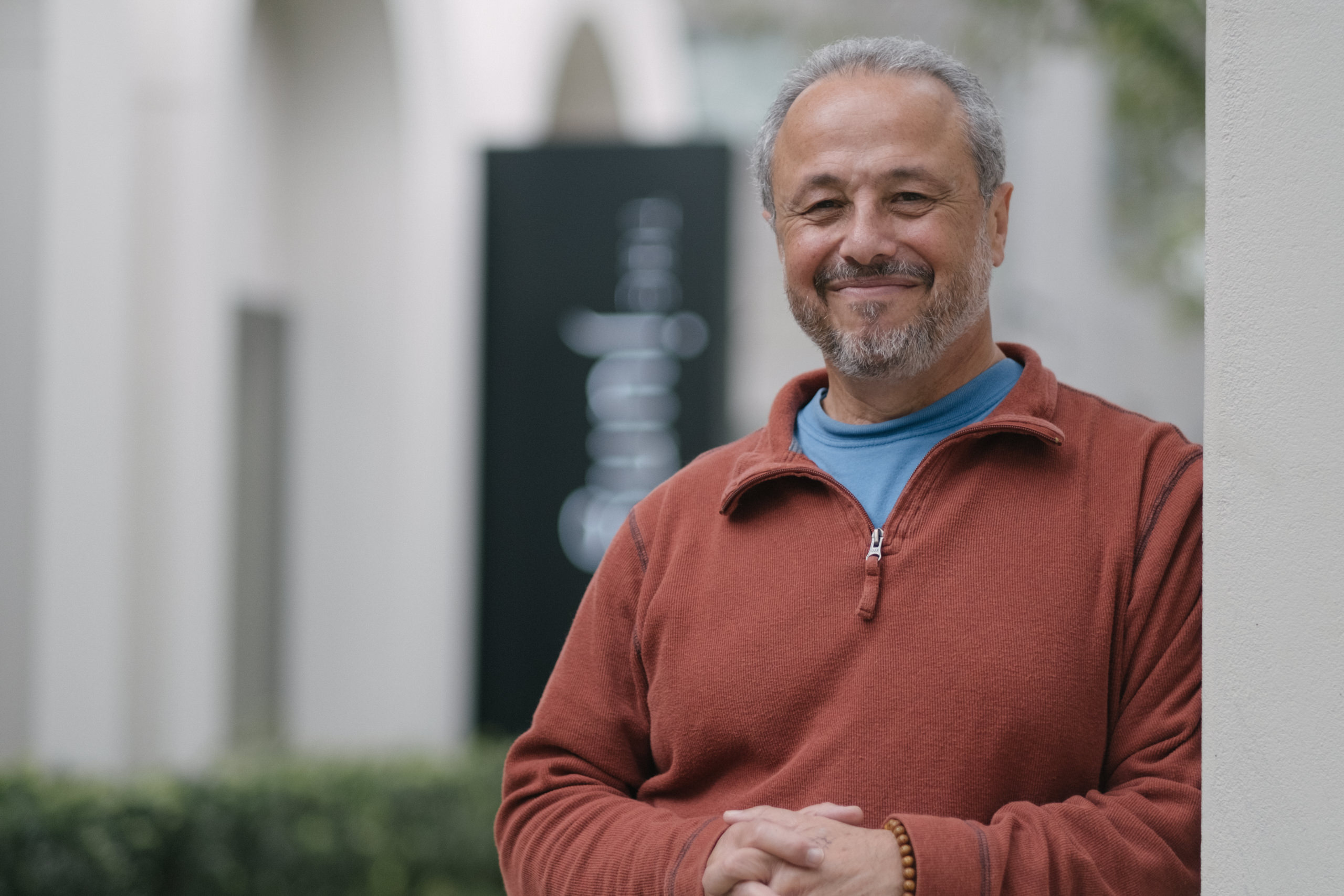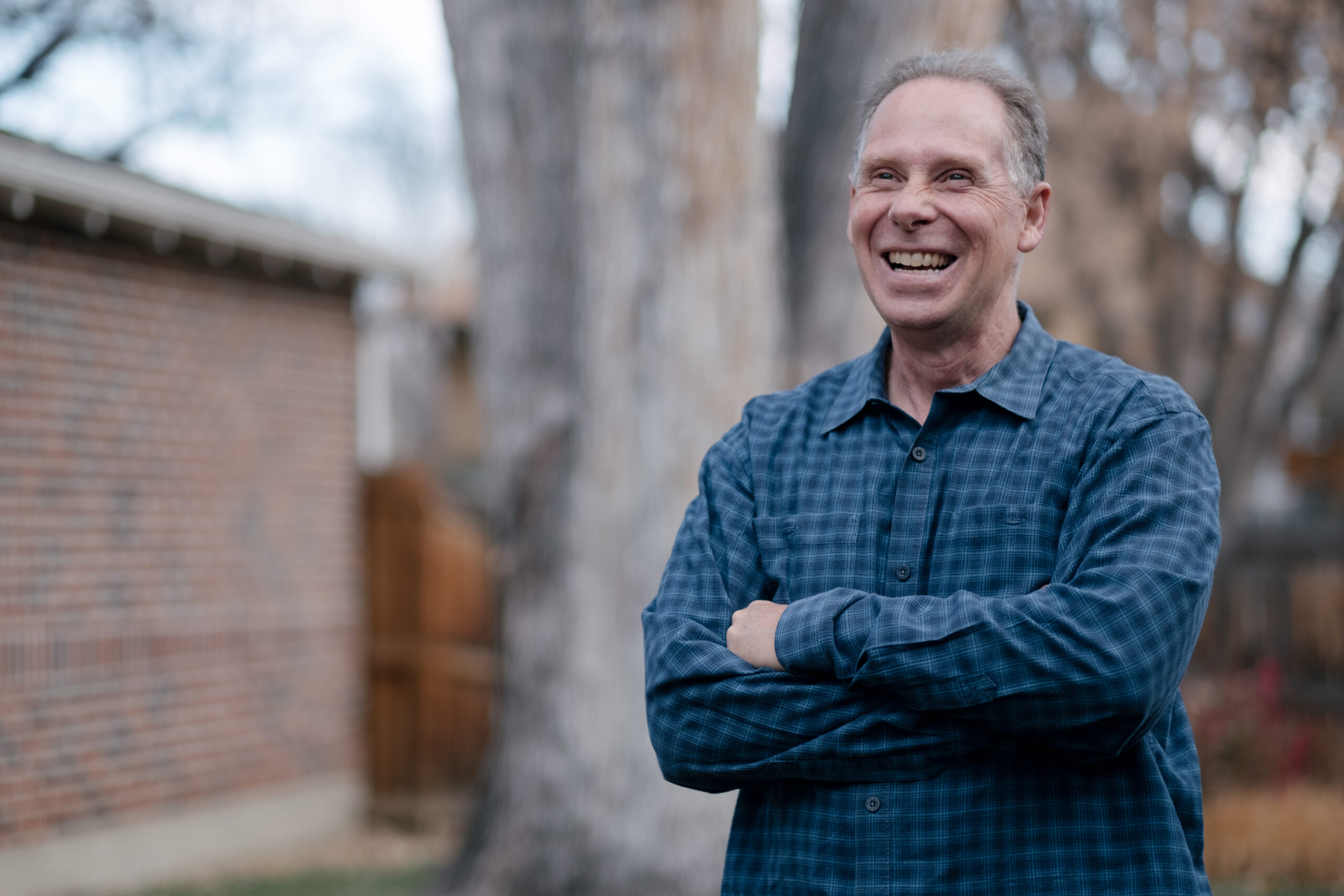Background
Amber, a native of New York, recounts her journey from a culturally Jewish but non-religious upbringing in the suburbs to a period of deep sadness and isolation in her twenties and thirties, despite outward success. Unfulfilled by material possessions, she decides to explore spirituality, embarking on a unique path that involves Airbnb-ing her apartment and living in a van on an ashram.
During this time, Amber begins to identify the seeds of sadness and happiness, delving into yoga and spending time on the ashram. Seeking more profound connections, she moves from chaotic Manhattan to peaceful Brooklyn. Her life takes an unexpected turn when she accompanies a friend to a monastery in Woodstock, where she unwittingly takes refuge in a Buddhist ceremony, marking the beginning of her Buddhist journey.
Amber’s transformative experiences continue as she attends retreats, encounters her first teacher, Kemper Tanjung Kampo ten, and embraces the practice of meditation. Despite initial awkwardness, she discovers the diverse ways of meditation and walking meditation, finding a deep resonance with the teachings of the Karmakar lineage.
Her journey unfolds further during a New Year’s retreat, where she realizes her unintentional transition into Buddhism. Amber reflects on the joy and openness of her first teacher, who played a pivotal role in her quick assimilation of Buddhist principles. Despite feeling like an accidental Buddhist, she finds comfort in understanding her identity and belonging within a community that shares her beliefs.
Teachers
Reflecting on the significance of teachers in her life, Amber shares her journey of seeking spiritual guidance before realizing her connection to Buddhism. She emphasizes the importance of viewing teachers as spiritual friends, avoiding pedestals or enmity, and cultivating equanimity. Amber credits her first teacher, Kembo Tanjung Kampo ten, for taking teachings beyond the shrine room and integrating them into daily life.
Amber highlights the grounded nature of Tibetan teachings, appreciating the accessibility of monks and llamas who sit on the ground during instruction. She describes her acceptance of Kembo as her teacher, acknowledging the transformation in her personal relationships and understanding of teachings being everywhere.
Having the privilege of photographing great masters, Amber sees it as an added layer of access to their teachings. She shares the joy of being in the presence of these masters, emphasizing the transmission of teachings through openness. Amber recounts how she relishes ordinary moments with teachers, such as shared meals and Momo meditation, recognizing the profound shift in her life since moving closer to nature and the monastery.
Amidst the scientific backdrop of her work in Alzheimer’s research, Amber contrasts science as a manipulation of nature with Dharma as an observation and harmonious working with nature. She views Dharma as the big picture, with scientific methods being just one small part of it. Amber expresses her understanding of teachers as multifaceted, acknowledging the impermanence and diverse forms they may take.
Amber shares a glimpse into the deeper aspects of her spiritual journey, revealing insights gained through the teachings and the profound support provided by Dharma during moments of adversity. This newfound perspective has solidified her sense of belonging and connection to her chosen path.
When were you first exposed to dharma?
Being brought up culturally Jewish (but totally lacking ‘religious beliefs’ in said upbringing), I had no feeling for being Jewish. It was just a thing that I (apparently) was, and everyone (97%) around me was: a noun, not a verb or an adjective, and certainly not an ‘active’ thing.
The first time I recall being exposed to an Eastern religion (in any capacity) was my junior year in high school, on an orchestra/band trip to Canada. I stayed in the house of an Indian family with another Jewish teen who was absolutely terrified, saying that Indian people hate Jews and that she was afraid of the pictures (deities) on the wall. I had zero point of reference but I wasn’t afraid of the family or their home, just a curious wonder at the fascinating blue elephant people. I stayed with them and she went to stay with another host family.
I was a sad, lonely little rich girl, living on the Upper East Side of Manhattan and crying behind giant sunglasses walking to work every day. It was really pathetic. I was desperately in love with a man who treated me like dirt, a ‘great love’ that I just couldn’t seem to shake.
My apartment was in shambles and I would sob on the floor amidst the mess. This is exactly how dying when unprepared feels: terrifying, alone, chaotic. Somehow I had to reel myself back in.
I moved into a tiny room in an apartment in Brooklyn with said dharma sister (whom I helped find her teacher), started practicing regularly and going to KTD on the weekends for retreats.
Within four months of being a daily practitioner, I was standing in front of Karmapa (the head of my Karma Kagyu lineage) and watching him expand into a rainbow light being. Baby was definitely swimming in the deep end.
Because I discovered my connection to Buddhism/dharma north of 40, I always approach my practice with a beginner’s mind: this continues to guide me well.
By the time I decided to move to Woodstock in 2016, it seemed easy/obvious. I took a one-room cottage 10 minutes from the monastery and started going up for puja(s) daily. Chanting Chenrizig, Mahakala and then Green Tara became my main sadhana practices and these practices are very dear to me.
My teacher, Prema Dasara, came into my life in 2016 (June 18). A fellow practitioner/dharma-Tara sister grabbed my arm and said, “Do you have your camera? Can you photograph something?”
Of course I did and of course I did and it opened this beautiful new world to me of devotion/praise/supplication to the divine feminine.
Prema led a giant group of Tara dancers and other KTD practitioners (with many Lamas observing) in the White Tara dance. She invited anyone in need of healing into the center of the circle. I went in to get a different angle and I was hit by the wave of love, healing and light. I realized a profound practice was happening and I was the recipient of enormous amounts/waves of love and light. I put down my camera and just started feeling.
When Prema and the Tara Dhatu sangha returned the next summer to once again dance Tara in Woodstock, I was extremely happy to be invited.
In 2018, I traveled to Brasilia to photograph/video the first Tara Dhatu Monlam, the fruition of a years-long dream of Prema to bring together international dancers for a week-long monlam of continuous prayer/Tara’s mantra.
It was a dream that opened a new world of possibilities to me–to be able to travel and devote my life in praise of the divine feminine. Prema teaches us that Tara allows herself to be beautiful so others will be drawn to her and receive her teachings. This was like fireworks going off in my mind: a reason for beauty beyond the male gaze–something this (born) feminist could work with.
I started growing out my side-shaved (Tibetan nomad-style) hair to ‘improve my geomancy,’ totally revamped my diet (shedding weight and old ideas) and began embracing the idea of feminine beauty with a purpose!
All of these experiences are to say that I felt led from the start. The crumbs were laid and I followed them and I am so grateful.
What resonates primarily for me with Tibetan Buddhism is the underlying idea that everyone has Buddha (awakened mind) nature, we simply need to uncover it. This is the same philosophy I used when I revamped my body/diet (The Whole Elimination Diet): taking away what is unnecessary and obscuring the truth to reveal that which is underneath.
This distinguishes Buddhism from religion for me because anyone, through devotion and practice, can potentially attain Buddhahood. In religion, God is God, and practitioners are practitioners. And no amount of devotion or practice can ever move you to the God realm.
Buddhism is a living practice, different and unique for each practitioner. My personal belief is that I am here to manifest enlightened mind by utilizing my precious human body as a vehicle for enlightenment, which is why I chose Tara dancing as my main (current) practice. I use this to inform all my movements throughout the day, which is why I work (at my desk) standing up and eat most meals standing up.
Green Tara has one leg outstretched, always ready to spring into swift action and I live my life the same way.
What are some of your practices/rituals that you do to support your spiritual development (meditation/prayers and etc)
Every day, I dance Tara, online with the Tara Dhatu sangha. I coordinate the East Coast sangha. I lead/facilitate 5 mornings a week (about to be 4!) (and often dance the other two days). I am happy to say that we have danced in community every single day (at least once) since March 18, 2020. The East Coast sangha inspired other daily, online Tara Dhatu (TD) practice circles, and we have practitioners not only from the international TD sangha but from others sanghas, traditions and practices. We are all inclusive! Although we dance in praise of the divine feminine, all genders are welcome!
I join Prema and Myri (as many afternoons as I can) to dance with the Brasilia sangha (really, international), especially our new Tara #20 dance. Tara #20 represents Radiant Health, dispelling infectious diseases and epi/pandemics, both wrathful and peaceful. Some evenings I make it to dance with the Phoenix/West Coast sangha. It’s such a beautiful thing that all these wheels are constantly turning.
I employ all the 21 Taras (22, technically) throughout my day, filtering all my experiences not only through the dharma lens, but through the ‘Tara lens,’ taking into account the divine feminine as I approach all my obstacles through my body, speech and mind.
Which sangha do you normally attend?
Tara Dhatu. Prema does regular monthly teachings now.
I was lucky not to do ‘spiritual shopping’ as I drifted through my 20’s and 30’s with no real philosophical anchor, except that which began seeping in through my yoga asana practice and the beautiful practice of kirtan. Devotional singers like Krishna Das, Wah! and Jai Uttal helped my heart heal at times when I was sure I would most certainly die and leave my body.
It wasn’t until I met the monks (at KTD/Karma Kagyu in Woodstock) that my lifelong yearning to find my teachers/mentors/found family began to come into focus.
Khenpo Ten grabbed me with both hands and pulled me in, “Will you get up for puja in the morning?”
It was American New Year’s and the first light ceremony was pre-dawn the next morning.
“All sentient beings are counting on you.”
And with this I got my first dose of Tibetan guilt (coupled with Tibetan grandmother finger) and I became a daily practitioner. This was in 2014 and I was already (just) north of 40, so I will probably always consider myself very much a ‘baby Buddha’ in this lifetime.
Tibetan Buddhism resonates so strongly with me firstly, because of karma. It is well known to me from past lives and now I am remembering. So it is very dear to me and has stirred deep emotion from my first exposure. I think it is probably this way with most practitioners, once it grabs a hold of you, it’s like welcoming a dear old friend back into your life after a long absence.
I took a friend up to KTD monastery in Woodstock because I thought she might find her teacher there. She was having very extraordinary ‘dreams’ and eventually, my intuition led us there. Of course, at this time, everything opened to me. I took refuge on my 41st birthday (the same friend, who took me as a gift) not realizing what ‘taking refuge’ meant. I definitely stepped in shit and became Buddhist.
It was a great comfort to me to realize I am Buddhist because it explained so many things about why I felt isolated and disaffected from American/Western culture, even though I have lived my entire life in America. I dreamed past death’s doorway long before I knew I was Buddhist, had no feelings for ambition or material wealth. I was drowning in a society that rewards cruelty, domination and fear yet I was craving connection, understanding and true power. I had no language to express this and no sangha to express this to.
How has the path manifest in your daily experience?
The path has manifested in all ways in my daily experience. I live my life through the dharma lens: that is to say, utilizing the philosophy which underlies Buddhism as a guiding principle in all interactions.
Tibetan Buddhism is the ceremony which overlays the dharmic philosophy. When Buddhism went to Tibet, it met/mixed with the local deities and traditions. Finding Tibetan Buddhism allowed me to find a framework and sangha, but starting to work with dharma freed me to apply the teachings to my entire life, outside the monastery and off the cushion.
Dancing Tara as my main practice makes it much easier to apply dharma to my entire life. Dancing is a main metaphor for life and the cosmos and is so applicable to so many situations as I move through life. Dance combines body (movement), speech (chanting/singing) and mind (deity yoga/visualization) to teach so many life lessons: the power of the three jewels (Buddha, dharma, sangha); precious human birth (we can dance because of our beautiful, gravity-affected, dense bodies!); balance (middle road), grace (non-grasping ego); flexibility (adapting); interdependence/humility/equanimity (circle dancing in community/personal relationships), non-attachment (releasing ego/becoming Tara); service (leading/facilitating); making offerings (purifications); beginner’s mind (being a good student/learning new practices/requesting teachings); devotion/practice (we can improve and turn the dance into meditation); meditation (turn off the thinking mind and enter the realm of pure movement and feeling)…
Dharma helped me process preparing for this interview and photo shoot. Of course when you (Jack) contacted me, just over a week ago, I might/could have/previously may have gone into panic mode: I have to practice and read and study as much dharma as much as I humanly can before you come to prove what a great practitioner I am/how much I know/how much I sacrifice for my practice.
I had to throw all those ideas out the window (much as Milarepa threw dirt all over his cave when he learned his teacher was coming to visit–after he had just cleaned up in preparation for the visit) and be authentic and true to myself and continue living the balanced life I lived before your chat popped-up: finding the balance between preparation and panic, confidence and ego, thinking what do I know about Buddhism/who do I think I am?
I just needed to relax and proceed with joy…
Instead of spending every “spare” moment cramming my brain with facts about Buddhism, I chose to spend the last week doing the following (in addition to daily Tara dance practice/leading 5-day/week): continue listening to my Brene Brown audiobook; develop ideas around inclusion and compassion at my work for a Washington DC-based Alzheimer’s organization ; Zoom/talk with friends/teachers; spend nature time with friends/Taras; plan full moon Tara dance/potluck gathering in Woodstock; organize my new abode; learn Tara #20 dance with international TD sangha…
Photography is another beautiful example of dharma in practice, a beautiful contradiction/conundrum: it both separates me from people/situations and brings me closer; allows me to see inside new levels/depth of ugliness and beauty; puts me behind the lens yet in front of people; utilizes technology to instill a primal view of life…
If you explore other lineages within buddhism, how did you come to decide on which lineage was right for you?
When the Karma Kagyu monks grabbed me, I was hooked. However, since there is such close synergy between the Tibetan Buddhist lineages, I am heavily influenced by the Nyingma and Dzogchen traditions. There are many Nyingma monastics and yogis who also consider themselves Kagyupa (Karma Kagyu).
I was lucky to visit Dzamgling Gar in Tenerife and experience a week-long Mandarava practice with Namkhai Norbu just months before his death in 2018.
That was a great awakening for me to see a dharma center run totally by lay-people with no robes in sight and engaged in a female-oriented practice/monlam. Practitioners dance and practice yantra yoga (asana mixed with pranayama). My heart strongly resonates with these yogi traditions/teachings and expressions of devotion, but underpinned by the strict groundwork and discipline from the monastic traditions I first encountered.
Prema Dasara is my primary teacher. The Tara Dhatu lineage dances are influenced/blessed by all five Tibetan Buddhist lineage masters, although Taisitupa (Karma Kagyu) is the recognized ‘God-Father’ of the TD Tara dance lineage, telling Prema to establish a Tara lineage to protect these sacred practices.
What is your primary profession?
I work in Alzheimer’s advocacy, remotely, through a organization based in Washington, DC. My entire professional time is spent helping/serving others, listening and working to make society better. That is a direct result of my stated purpose for living: which is to manifest wisdom-mind and ultimately achieve enlightenment, by practicing service and compassion.
I spend my non-working time running the East Coast “Daily Dharma Dance” dance circle, offering in-person Tara dance circles on both the new and full moons.
I also help guide people to their own radiant health (directly inspired by Tara #20) by employing principles found in the The Whole Life Elimination Diet coupled with dharma (wisdom of Buddha, dharma, sangha), helping them to heal (sometimes lifelong) troubled relationships with food.
Fruit of Practice
Reflecting on her transformative journey with Buddhism and Dharma, Amber underscores the profound impact these philosophies have had on her interpersonal connections. She credits her understanding of compassion and interdependence for enabling her to cease blaming others and foster empathy for their struggles. Growing up in a culture of individualism, Amber found solace in the collaborative nature of Sangha, realizing that a solitary practice can coexist with collective energy.
Amber narrates her evolving perception of solitude and community, encountering monastics who live contentedly without romantic relationships. Exploring meditation techniques like tonglen, she highlights the practice of sending out positive energy and taking in suffering, emphasizing the interconnectedness with others. This shift in perspective allows her to find purpose in her own suffering and extend compassion to others.
The geographical change from Brooklyn to Woodstock, bringing her closer to the monastery, becomes a metaphor for her internal transformation. Nature, once distant, becomes a vital part of her practice, and she recognizes the importance of aligning her surroundings with her spiritual journey. The move signifies her understanding of karma as responsibility, not blame, and the ability to shape her environment.
Amber delves into the impact of chanting and Puja on her spiritual growth, initially struggling but eventually finding joy and connection in these practices. The communal aspect of chanting and making offerings becomes a source of profound connection, contrasting with her previous cultural experiences. Through Buddhism, she embraces a lens of responsibility, acknowledging her karma and utilizing it as fuel for devotion and practice.
Amber describes the profound connection she feels to the Sangha and the timeless practice of Buddhism, emphasizing the unbroken lineage of teachings passed down through generations. The act of making offerings becomes a transformative experience, fostering gratitude and shifting her mindset from scarcity to abundance.
As she reflects on her privileged upbringing, Amber recognizes her duty to give and serve, expressing a commitment to living with compassion and serving as an example. Chanting brings her a joy that was previously absent, making her appreciate the singular focus and purpose it provides. Her ongoing practice embodies a beginner’s mind, rooted in the joy of the practice itself, irrespective of the need for an external purpose. Amber hopes to preserve this perspective, maintaining a lifelong commitment to her spiritual journey.
Pitfalls of Student Teacher Relationship
Amber reflects on the complex dynamics of the teacher-student relationship in the Western context, acknowledging the potential pitfalls and unique challenges that arise when integrating Eastern traditions. She notes the messiness of this convergence as an integral aspect of authentic dharma practice, urging a collective effort to address and navigate these challenges.
Expressing concern over the prevalence of scandals, particularly those of a sexual nature, Amber emphasizes that the core issue is the abuse of power rather than the specific nature of the transgressions. She highlights the absence of external laws governing monastic settings, emphasizing the need for individuals to define their own expectations within these relationships.
Amber delves into the cultural clash between Western practitioners and Eastern llamas, recognizing the different perspectives each group brings. She notes the potential for misunderstanding and conflict, especially when the reverence for llamas is juxtaposed with Western cultural norms. The act of chanting and praising figures can lead to confusion when faced with the human reality of these revered individuals.
Drawing from her own experience with Karmapa, Amber emphasizes the importance of seeing teachers as extraordinary humans rather than infallible deities. She acknowledges the vulnerability and openness of the teachers and urges practitioners to find equanimity, avoiding the trap of placing teachers on pedestals. Amber notes the role of teachers in guiding students toward a balanced perspective, even if it involves making mistakes that reveal their humanity.
Amber reflects on the tendency for practitioners to unquestioningly follow teachers’ instructions, even to the detriment of their well-being. She advocates for the creation of individualized practices rather than mere imitation, encouraging practitioners to find their own path within the teachings.
Having observed the fallibility of venerated lamas in Woodstock, Amber emphasizes the importance of recognizing their humanity and extending compassion to them. She shares an anecdote of a Lama who openly admitted to being a “failed monk,” viewing his honesty as a relatable and valuable quality. Amber encourages the concept of spiritual friendship, where practitioners contribute to the mutual understanding between Western and Eastern perspectives.
In closing, Amber stresses the significance of finding true masters or teachers who embody relatability and honesty. She underscores the unique role teachers play in guiding individuals on a personalized spiritual journey, asserting that while books and knowledge are essential, the guidance of a teacher is irreplaceable in the transformative process.
Fruit of Practice
Reflecting on her transformative journey with Buddhism and Dharma, Amber underscores the profound impact these philosophies have had on her interpersonal connections. She credits her understanding of compassion and interdependence for enabling her to cease blaming others and foster empathy for their struggles. Growing up in a culture of individualism, Amber found solace in the collaborative nature of Sangha, realizing that a solitary practice can coexist with collective energy.
Amber narrates her evolving perception of solitude and community, encountering monastics who live contentedly without romantic relationships. Exploring meditation techniques like tonglen, she highlights the practice of sending out positive energy and taking in suffering, emphasizing the interconnectedness with others. This shift in perspective allows her to find purpose in her own suffering and extend compassion to others.
The geographical change from Brooklyn to Woodstock, bringing her closer to the monastery, becomes a metaphor for her internal transformation. Nature, once distant, becomes a vital part of her practice, and she recognizes the importance of aligning her surroundings with her spiritual journey. The move signifies her understanding of karma as responsibility, not blame, and the ability to shape her environment.
Amber delves into the impact of chanting and Puja on her spiritual growth, initially struggling but eventually finding joy and connection in these practices. The communal aspect of chanting and making offerings becomes a source of profound connection, contrasting with her previous cultural experiences. Through Buddhism, she embraces a lens of responsibility, acknowledging her karma and utilizing it as fuel for devotion and practice.
Amber describes the profound connection she feels to the Sangha and the timeless practice of Buddhism, emphasizing the unbroken lineage of teachings passed down through generations. The act of making offerings becomes a transformative experience, fostering gratitude and shifting her mindset from scarcity to abundance.
As she reflects on her privileged upbringing, Amber recognizes her duty to give and serve, expressing a commitment to living with compassion and serving as an example. Chanting brings her a joy that was previously absent, making her appreciate the singular focus and purpose it provides. Her ongoing practice embodies a beginner’s mind, rooted in the joy of the practice itself, irrespective of the need for an external purpose. Amber hopes to preserve this perspective, maintaining a lifelong commitment to her spiritual journey.
Deities
Amber explores the concept of devotion and worship in Buddhism, noting its departure from traditional notions. She highlights the unique nature of worship in Buddhism, emphasizing that it doesn’t involve placing oneself below the deity but aims to dissolve the ego. Amber discusses the practice of Tara dancing and how it allows practitioners to bring the enlightened being closer, breaking down the barriers between the self and the deity.
In her explanation, Amber articulates the challenge of relating to the visualization process and how the dance, accompanied by music, facilitates a natural connection with Tara. She clarifies that the intent is not worship but an understanding of Tara’s unconditional love and the dissolution of the ego.
Amber reflects on the symbolism within Tibetan artwork, particularly the representation of wrathful deities like Mahakala. She relates her attraction to Mahakala to her own experiences of being caught in sarcasm and sadness. Amber describes the process of seeing these deities as aspects of herself that can be tamed through practice, discipline, and self-reflection.
Drawing parallels with Guru Yoga, Amber introduces the idea of bringing the deity inside oneself. She explains how visualizing the deity as an exaggerated aspect of oneself allows for the taming and integration of those qualities. Amber acknowledges her novice understanding of Guru Yoga but emphasizes the practice’s fundamental aspect of recognizing and working with aspects of the self that seem wild, outrageous, or inhuman.
Challenges
Amber reflects on the various challenges people face when approaching Dharma practice, acknowledging the Western mindset’s influence with its emphasis on proof and a binary approach. She advocates for finding the middle road and cultivating equanimity, emphasizing that discipline is freedom and a means to embrace one’s wildness while getting things done.
Addressing the perceived barriers to entry, Amber discusses the misconception of having to dedicate extensive time to practice. She encourages a shift from all-or-nothing thinking, suggesting a pragmatic approach to experiencing Dharma benefits. Amber invites individuals to undertake a week of Dharma practice, tracking its impact on their minds and lives.
Drawing from her personal journey, Amber recounts her transition from a city environment to a monastery, highlighting the profound and quick transformation she experienced. She challenges the resistance to sitting with one’s misery and underscores the importance of patiently observing the practice’s effects.
Amber advocates for moving away from binary thinking and adopting a more exploratory mindset. She suggests experimenting with Dharma, assessing its impact honestly, and abandoning preconceived notions about immediate enlightenment. She shares her own journey of consciously entering Dharma and finding joy in the discipline, encouraging others to immerse themselves in transformative experiences such as retreats or trips to supportive places.
In summary, Amber urges individuals to transcend perceived barriers, embrace the discomfort, and immerse themselves in Dharma practice to discover its transformative potential. She emphasizes that the obstacles are often not about time or money but are mental constructs that can be overcome with a genuine and adventurous approach.
What teachings/practices have had the greatest impact on your life?
Momo meditation & cleaning minds with Khenpo 10 at KTD: meditating everywhere while making momo (Tibetan dumplings) in community at the monastery, silently reciting Chenrizig’s (Buddha of love and compassion) mantra; cleaning the kitchen becme cleaning our own minds with the mantra ‘om mane padme hung.
Allowed me to instead of rejecting some semblance of man-made-consumer-idealized-
All of this freed me to make the vow to come back in the female form until all achieve enlightenment.
Tara allows herself to be beautiful to draw others to her, so that she may teach them” (Prema Dasara): Tipping the scales toward the sacred feminine is my main mission in life, in this body, to counterbalance the toxic masculinity that has taken over our beautiful world. We need the buy-in/support of men everywhere!
I now believe that tipping the scales toward the sacred feminine is my mission in life, in this body, to counterbalance the toxic masculinity that has taken over our beautiful world. We need the buy-in/support of men everywhere!
“Renunciation is not giving something up, it is seeing things as they truly are” (-Lama Tenam Shastri): I stopped seeing not doing things that hurt me (ie eating that soy burger) as ‘giving something up’, but rather as renouncing suffering, which I very much wish to do! This understanding of renunciation allowed me to totally revamp my diet and health. And eventually, to begin helping others. I make food for people that meet ‘my standards’ (vegan and free of: grain, soy, nightshades) – specialized for the highly sensitized!
-
Some practices make time, they don’t take time (Tara dancing, chanting, sadhana, yoga asana)–meditate everywhere! Sharing this is my mission.
-
“We are here to practice/master ‘joyness.’ You are a very good messenger for Tara.” -Prajwal J. Vajracharya
-
Truly believing that whatever I have to offer is enough. Transmitting joy for practice is enough. Showing up every day to lead is enough. Sharing the mantra is enough. Invoking, praying to, dancing for Tara every day is enough!
Relationships
Amber reflects on her struggles with personal relationships before embracing Buddhism, expressing the difficulty she faced in understanding herself and her role in the world without a framework. She shares the challenges of a hidden 16-year relationship that was emotionally consuming and painful. The attachment and idealized notions of love caused significant suffering, leaving her devastated.
With the introduction of Dharma into her life, Amber starts viewing her past relationships through the lens of karma, questioning whether the connections were positive, negative, or neutral. She recognizes that Dharma helps dissolve the rigid and limiting ideas about love, encouraging a more expansive and compassionate perspective.
Amber describes how the monastery provided a practical excuse to move away from the city, helping her emotionally extricate herself from the previous relationship. She discusses the transformation in her understanding of love through Dharma, emphasizing the importance of relaxation and expansiveness. The dissolution of the notion of a one true love and the recognition of shared past connections with all beings liberate Amber from the constraints of attachment.
Although Amber acknowledges the ongoing challenges in her current relationship, she expresses a shift in approach, moving away from the myopic focus on one person towards a more open and expansive understanding of love. Despite the difficulties, she sees potential for connection and growth in her current relationship, guided by the principles of Dharma.
Tara Dance
Amber recounts her introduction to Tara dance through meeting Premiere and engaging in a unique dance experience. Initially unfamiliar with Tara and Dharma practices, she found herself amidst a gathering of around 50 or 60 people dancing in a courtyard, including Taras, llamas, and fellow Dharma practitioners. Despite her lack of knowledge about Tara dance, Amber, who had a background in creative expression through dance since childhood, embraced the practice.
Tara dance, according to Amber, combines body, speech, and mind in a seamless way that aligns with Tibetan teachings on these aspects. She highlights the transformative power of the dance, describing it as a moving meditation, gentle in its movements yet capable of making profound connections. The practice brings together various elements like visualization, chanting, singing, and yoga, offering a holistic experience.
Amber reflects on the significance of dance in daily life, emphasizing that it is not confined to formal practice but is a universal expression found in celebrations, religious ceremonies, and personal joy. She underscores the joy and neuroplasticity benefits derived from dance, suggesting that it can contribute to changing the brain’s connections and emitting light, aligning with the concept of beings as vessels of light.
Amber also discusses the impact of COVID-19 on Dharma practices, specifically Tara dance, and how virtual platforms like Zoom have allowed for a more inclusive and accessible approach. Despite initial resistance to virtual teachings, she sees the positive evolution of the practice, breaking down barriers and reaching a wider audience. Amber expresses her hope that this newfound inclusivity continues beyond the pandemic.
In addition to the benefits of dance, Amber explores the profound impact of Tara dance in fostering a sense of community, breaking down gender barriers, and offering a unique way to connect with the divine feminine. She relates her personal experience of finding a role model in Tara, the only female representation she consciously emulated, and aspires to embody Tara’s qualities, such as being a being filled with light.
Overall, Amber describes Tara dance as a powerful and transformative practice that goes beyond physical movement, providing a platform for self-discovery, joy, and a connection to the divine feminine.
Yoga
Amber expresses her profound love for yoga, initially viewing it as a physical practice focusing on asanas, which she had unknowingly learned as a child. Starting her yoga journey at the YMCA in Chicago, she benefited from an older black woman’s teachings in a non-traditional setting. The circular practice fostered equanimity, and the teacher’s open-hearted approach left a lasting impression.
Her perspective shifted when she encountered a unique yoga class led by a teacher named Jed in New York City. Chanting throughout the class and encouraging practitioners to close their eyes, Jed introduced her to the vibrational and internal aspects of yoga, moving beyond mere exercise. This experience marked the beginning of her understanding that yoga could be something more spiritual and transformative.
Amber’s yoga journey took a deeper turn when she faced personal challenges and found solace in a monastery. Introduced to Himalayan Yoga by Kembo, she discovered a more pragmatic approach that connected her yoga practice to the surrounding nature, influencing her way of living. Kembo’s unconventional teachings challenged traditional notions of yoga, urging practitioners to break free from preconceived ideas.
Amber’s path to becoming a yoga teacher unfolded unexpectedly. Kembo insisted that she undergo yoga teacher training and start teaching. Initially resistant due to her humility and reluctance to embrace a teaching role, Amber eventually embraced it, seeing it as a form of service and sharing. This shift marked a transformation in her understanding of yoga from a physical practice to a holistic approach involving teaching, sharing, and serving.
As her yoga practice evolved, Amber integrated it with Dharma, leading retreats at the monastery for Dharma practitioners. Yoga became a transformative tool that allowed her to accept herself as a teacher and leader. The merging of yoga and Dharma underscored the interconnectedness of these practices, challenging the segmentation often imposed on them.
Amber reflects on the potential pitfalls of powerful yoga practices leading to ego inflation and acknowledges that dissolving the ego is a crucial step toward enlightenment. She emphasizes the importance of having a teacher to guide practitioners through powerful practices, preventing them from straying in the wrong direction.
Overall, Amber’s journey with yoga spans physical, spiritual, and transformative dimensions, illustrating the interconnectedness of yoga and its potential to dissolve ego barriers and reveal one’s true self.

